How to Increase Hand Speed - J Release
Hand speed is the secret to effortless power in the golf swing. In this video, I teach you how to produce it instantly to feel what a pro swing feels like.
Today is graduation day for those of you who've been following the goat code.
I've spent most of my life studying the golf swing and the one thing I've been obsessed with that you guys are well aware of is effortless power.
It's practically my middle name at this point, and today I'm going to share with you how to get it.
Because in studying the Goat code and all the greats, the Nicklases, the Watsons, the Palmers, the Players, Tiger, you name it, One thing that's synonymous amongst all these great golfers, and in the modern players today, is how effortlessly they produce speed.
Compared to the average Joe, the average Joe.
When I go out to my local golf course and I play, I see this all the time falling off balance.
A lot of body rotation, a lot of physical effort for not a lot of payoff.
Today, I'm going to show you how to reverse that completely with some really simple movements that are going to help you understand.
How, guys, my size hit the ball so far.
I finally can explain it in a way that I think anybody can translate this to the golf course right away and understand what it is that's been missing in your swing.
We're going to start with a lead arm only.
So if you're a right -handed golfer, you're going to get left -handed swings.
And what we're going to do first is what I was talking about in the introduction video about getting this wrist to snap.
Now, the key here is that you're not trying to pull hard with your lead arm, whether you're a lead side dominant or a trail side dominant, it doesn't matter.
There's no power in trying to pull that arm through.
You're going to delay the release of the club.
So what I want you to feel and what I want you to do today is listen for the swoosh.
So this is everything in the swing where all that speed is happening.
And it's going to help you start to understand what it is that you need to feel in your swing.
So if I make a little practice swing lead arm only, you're going to hear a little swoosh right at the bottom.
Now I'm not trying to produce any power here.
I'm just trying to get my wrist to snap.
And when I say snap, what does that mean?
That's the focus of today's video.
How do we get our wrists to move the fastest way possible?
Obviously as I talked about in the release video, trying to get the club from this side of the ball to this side of the ball is the name of the game.
That is what you're trying to do in the golf swing.
and you're trying to do it as quickly as humanly possible while still having control over that club face.
What the lead arm's job is to do, the lead wrist more specifically, is to allow this wrist to go back into extension.
Now for most of you, and golfers I see in in-person lessons all the time, you're trying to get this bowed or flat lead wrist at impact, and I'm going to have you feel that versus letting the wrist move into extension.
So the first way what I want you to do, I've got a six iron here.
This is a good one to practice with.
I'm going to take the club back and I'm just going to let the wrist hint swing back.
I'm going to feel the club head swinging this wrist back and through.
And if I relax my hand, I'll get a little swoosh at the bottom with no body effort whatsoever.
This has got the club moving very quickly.
Just by letting my wrist move into deviation and extension, and I want the wrist to be cupped on the other side.
And there also, as we add speed, there'll be rotation.
So as you're doing this, feel what the club head does versus what you would feel if you're trying to bow your wrist.
So now, instead of letting the club release, bow it and hold that bowing there as long as you can.
What happens?
Well, first of all, you're have to hold the club tighter with your hands.
That's going to create tension in your forearms, it's going to create tension in your wrist, it's going to slow the club down.
So if you try and get a flat left wrist, all you're doing is holding off the release.
The release is the most important part of the golf swing, and so when you're holding that release off, you're just slowing the club down.
You want that club to get past your body as fast as humanly possible, and the only way to do that is with your wrist, letting your wrist do this.
Which is what you're trying to feel, and what I was talking about if you were snapping a towel.
Now you can kind of create the same effect with the club, but it's difficult because that's not really how the golf swing works.
You can't actually get your hand to move backwards.
But the feeling is very much that now you've got all this momentum and everything else that's going to carry the club forward.
You'll never be able to do that, but your feeling is that you actually want the handle to move backwards, away from the target.
Because what does that do to the club head?
It advances it.
If the butt of the club is moving technically backwards, the club head is moving forward.
That's going to give you more speed versus holding it off and trying to get the butt of the club and the club face.
To move together through the hitting area, that's the slowest way you could possibly move the club.
Which is why it's great in a chip shot, to a degree, you don't even want to do it that much on chip shot.
But the swing is all about producing speed and all about producing speed right there.
And I can hear I've got a little mic set up here.
There's not going to be a loud swoosh when you're doing it lead arm only because there's just not that much speed because your your trail hand is the speed hand.
If I make a little longer swing is a little louder swoosh.
And all I'm doing is letting that club head pass my hands.
The thing that many of you I see are trying not to do.
You're trying to really get those hands forward and all it does again, you'll never get your hands forward like that using your arms and hands.
To get a flat lead wrist, you need to not try and create a flat lead wrist.
That's the opposite of what you want to feel.
So get a feel for this of your hands dropping, relaxed, and snapping.
Now what you'll find is if you turn, that swoosh sound that you want to happen right down here at the ball is going to start happening further and further out here.
So now if I turn, the swoosh is happening more out here.
And to a degree, we want it to happen at the ball and slightly in front because the release isn't done until after we actually strike the ball, that's partly why you have shaft lean impact when you swing correctly.
But what you're feeling is trying to get it to happen as down here, as close to the ball as I possibly can.
And the more I rotate, the later that release happens.
That's why when you're using a throwing pattern to create speed like the goats did, you don't want to try and rotate your body through aggressively.
That will always delay the release of the club.
What you want is your body to be reacting to what your wrists are doing.
You can see now my body is very quiet, but you can see and hear that as I let that wrist snap and the more supple I keep it, the more swoosh sound I'm going to hear as I relax that wrist.
So I'm trying to get that club head to pass my hands.
I can wait a second.
Well, How do I get a flat left wrist?
That's like flipping it, isn't it?
You get a flat left wrist by shifting forward.
And this wrist, as we talked about in the release video, as the release is working this way and then moving into extension.
It's happening after the strike once you shift your pressure, so I'm still actively trying to get the wrist to release through here.
But that's giving me shaft lean, because I've moved my center of mass forward.
That's how you create a flat lead wrist, and shaft lean is not by trying create shaft lean, it's by trying to release it and get your wrist to literally feel like a flip.
But moving your pressure forward, that moves the bottom of the swing arc forward and delays the release just a little bit, so that you have shaft lean at impact.
Now, one of the questions I get all the time on the website is, how do you get the club to move left?
It's the last thing you'd ever want to try and do.
Because what typically happens when golfers think about getting the club to go left is they turn.
That's a completely different way of swinging and releasing the golf club, but the club will work left when you release your wrist properly.
And while the lead hand what we're focusing on right now, we're going to focus on the trail hand.
In just a second, as I let this lead wrist release, the club is going back left and on plane.
If I tried to bow the wrist and hold that, you know, kind of the old flat left wrist position, as long as I could.
The club's not going to go left, it's only going to go left if I rotate in a fully released golf swing where you want true, effortless power.
And you can see how I was just letting my wrist snap earlier, and there's a boost of speed there with zero effort from my body.
The same thing happens on swing plane if I just let my body stay quiet and static and let the wrist snap.
Where's the club?
It's way over here.
The wrist action is what allows that club to get back on plane.
What I'm feeling, I'm never trying to work the club left.
I'm trying to actually release it more out, more kind of down the line, which initially feels more from the inside.
As I feel like I'm releasing it back here.
Because if I start turning, that's what gets the club too far out over the plane.
As I do this way, I feel like, and when I look at it down with my eyes, that the club is working straight down the line.
But then and then, the club feels like it goes up.
So that gives me a very square path for a very long time.
As the wrist is releasing and the wrist rotation, and of course, the wrist is going to turn the arm, the forearm bones and the upper arm as well.
That's how you get the club to work back to the left and stay on plane, but the feeling is never this.
Trying to force the club to exit left, you want to let the club exit left by allowing the club.
The wrist specifically to re-hinge on the other side and feel that weight of the club head doing that for you and you'll see that as I do that, the club comes out perfectly on plane.
Now let's talk about how to really create effortless speed with the moneymaker the power hand which is your trail hand in a throwing pattern.
In an ideal world, the simplest way to get the club from this side of the ball to that side of the ball would be what.
What would you do with your wrist?
Well, you would just hinge it straight back and hinge it straight forward.
This is a powerful motion that your forearm can create for you.
And this doesn't take much effort, right?
This is not moving all my big muscles in my body.
It's not a big muscle movement at all.
It's a wrist movement.
So this is probably faster than most guys with a local clubbers swinging right now, just with my right hand releasing, hinging back and through.
That motion is exactly what you want to feel in the golf swing.
Now.
The catch is, if you just hinge it back like this, what's it going to do to the club face?
Well, obviously, it's going to shut it, and even if I add some body rotation, I'm going to have a really shut club face at the top.
So how is it that guys like Mike Austin, who's the longest hitters on the planet, who ever lived?
He talked about just feeling like you were slapping the club with your hand.
Doing this.
That feeling is what you want to have through the hitting area, but it's more dynamic than that and there's something you've got to do.
And I think this is kind of the the real secret, if you will, of understanding where real, effortless speed comes from.
We know it comes from the wrist that's been covered for 70 years ago in the book For the Search for the Perfect Golf Swing.
Where they learn that, you know, two thirds of the club head speed is coming just from the release of the wrist.
So that's no secret.
The secret is how do you move the wrist, exactly what does it feel like, and what?
I've figured out?
The best way to describe this to my students and feel it in my own swing is by drawing the letter J.
What do I mean by that?
Let me show you all right?
So if you want effortless power, all you need to know is the letter J.
And what I mean by that is, I'm going to hold this club up here.
Just where my arm is parallel to the ground.
So if my wrist just hinges back and forth, it's just going to draw a straight line.
Right now again, if I had a club, if I'm doing that with a club face, the club face is going to be very shut now.
This is a powerful position for my wrist to be in, but I've got a shut club face.
So that's going to be tough for me to swing back and not start fighting a hook because there's natural rotation in that club face as well.
That's why you need to feel not just a straight hinge, but a jay.
And what I mean by that is, if I do it with my hand like this, so I'm going to.
This is the bottom of the J, and then you'll see as my wrist begins to rotate, do you see how this creates kind of a letter J on its side?
That motion?
What I'm doing is hinging and rotating.
Because, remember, like I talked about in the axiom video in the release video, your hand doing this is a very quick and powerful motion to get that club head really sped up through the ball.
You can see that, you can't even see, if I just do that clockwise motion, you can't even see the club.
It's moving so quick with just my wrist, but in order to have that clockwise axiom motion, I have to wind it up.
Just like winding up a clock.
You've got to wind it up this way, load up that wrist and then unwind it.
Like I showed you in the release video, so to feel that it's this motion.
And so now if I do it with this little short club, so it's easy to see.
I'm going to start going back.
I'm going to start hinging and I'm going to start rotating and as long as I keep my arm in the right position, the club's going to be square at the top versus shut if I just went back with a pure hinge.
So that's a pure hinge and you can see the leading edge is kind of looking up at the sky.
We know we need to have that club more squared up.
The feeling for this is drawing that letter J, that motion is what gets the club.
And it's not even necessarily a full J, because what's that gonna do at the top of your swing?
So if I do a full J, I'm gonna get a little cross the line, right?
Freddie Couples, Jake Knapp, many, many great players have that motion.
It's a very powerful motion because you just have that much more wrist to unwind in the downswing.
So if I give it fully like this, not a bad thing.
If you understand how to release it, Then you can swing as long and across the line as you want.
Because all you're really doing is giving the wrist more load and more energy to release in the downswing.
So if you draw a full J, hinge and rotate, that's going to get me across the line a little bit, but as long as I unwind it in the exact same way, it doesn't matter.
It just gives me more time to accelerate the club.
So when you look at it, if you want to be on plane, you're just going to make the bottom half of the J.
So it goes here and then it's kind of stopped.
It doesn't loop back around.
If you want to hit it monster distances and you see how far you can hit it, you're going to get a little long across the line, a little flying elbow.
The whole trick to this, If you're here, it's perfectly fine, you just have to unwind with that axiom motion, like I showed you in the release video.
If I do that and I get really long again, this would be hard for me to do with my lead arm up here.
But if I got that far across and I begin throwing it, like I showed in the release video, I'm going to have all the speed in the world.
So now when we take a club, a full length club, and go back, how is this really working?
So I, we know we want to draw this J with the wrist.
That feeling is what we're looking for.
And then we're going to literally just unwind that in the downswing, but we got to get it loaded up correctly in the backswing first.
So what you want?
You want to be careful not to just set your wrists immediately off the ball.
This is going to create a lot of tension in your form to pick the club up like that.
And so what's going to happen is you're going to want to release it too early or incorrectly.
Because you got too much tension.
Your wrist will be too tight and you won't have that suppleness to get that snap when I was doing with my lead hand.
Only.
My wrist has to be super relaxed, and the more relaxed I get it, the more relaxed I get my arm the whole thing, the more the wrist can snap.
And the same thing is true in the trail hand, where all the speed is coming from me.
We really want to make sure that that thing is relaxed.
So as I go back, I don't want to start picking the club up and getting a lot of tension in my form.
I want this thing to be soft and supple at the top so that I can sling it and release it coming down.
So the trick is as you go back, use your whole body pressure shift to get the club some momentum to start back, then start the hinge and feel the club swinging up to the top.
And as I do this, you can see it's a nice gradual motion.
My body's not loading up for power.
My body's creating momentum for the club head to swing with my wrist.
It's a totally different concept versus loading up and being really tight with your body.
All I want is for this club to swing.
So my wrist can stay supple, so as I do this, my wrist starts hinging.
Kind of, maybe, you know, halfway through the end of the takeaway, or towards the end of the takeaway.
That's when my wrist starts to naturally hinge.
Because the momentum of the club created by my body movement starts to give some momentum to the club, and my wrist naturally wants to hinge.
As I do that, it's also it's going to run out of hinge at some point.
And that's where we add that little bit of rotation, like I talked about in the release video.
So as I go back and a little bit of rotation, now I've got the club on plane.
My wrist is fully set and loaded.
And all I have to do is begin releasing that wrist.
So I'm going to unwind that J.
So once I've made this motion where I've made the J, I'm tracing it back on the way down.
That is the downswing.
So when you think of it that way, as you're getting to the top and you get a feel for what this J is in the full swing, It's easy to feel this here at first, where you're just kind of going back and tracing that J, and you'll feel this.
The first time you do this with your wrist, just hinge it straight back, you'll run out of hinge and let your wrist rotate and let these bones rotate just a little bit.
That's all you're trying to do.
And then on the down swing, you should feel this should be pretty loaded up.
You want to go quick and release that wrist on the way down.
The trick is that's all that really needs to happen.
Your body needs to react to that in a throwing pattern.
In fact, you're trying to really not use your body really at all.
If you add rotation to this, it's going to throw everything off.
Because then you're just going to release it way out here or in a very disjointed way, and you're not going to have any synchronization between your body and your wrist.
You really want your wrists and your hands guiding this motion in the club head, feeling that club head set, And then let it come down.
And so now what I'm trying to feel is I want to have that swoosh sound happen at the bottom, very relaxed.
My body is just reacting to that.
I'm not trying to get hard onto the lead side, I'm not trying to rotate, in fact, I'm trying to just stay back.
And feel the weight of the club head swinging in that J pattern back and up, I feel the rotation, hinging rotation that gets the club set.
And then I'm going to begin not by turning my shoulders, not by, you know, of course, my pressure is shifting, but it's more shifting as a reaction to this club head going this way, it's not me trying to shift my weight independent of my arm motion.
I think that's something I see a lot.
Where golfers go to the top and they try to move their body first when they're trying to do a throwing pattern.
And really, the body movement is truly a reaction.
So as I go to the top, I'm trying to move that club head and my wrist first.
But as I do that, I'm not going to do this.
That wouldn't make any sense.
As I do this and begin to throw and the momentum is going this way.
It actually drives my hips forward, tilts my spine back.
Which, guess what, drops me right into GDP, but I'm not trying to move my arms into GDP.
I'm trying to move my wrist to move the club head, that moves me into GTP so that I can snap my wrist.
Just like on the left hand side, once I've got that rotation taken out, the curl part, the hook part of the J, I'm getting rid of that early.
And that's what creates that look you see all the time.
I have a lot of tour pros who look like they have the club going back away from the target.
It's not body motion.
They're using their wrists.
So as I feel this and the wrist begins to come through, once I get that initial curl of the J taken out, it's re-hinging because that's the most powerful way to get the club from this side to this side.
That's what you want to feel.
Now I'm going to show you a drill how to get this feeling of how to get that rotation into and out of your swing.
Now to get a feel for this motion, which is going to be very foreign for most golfers, I want you to take the club and have your arm 90 degrees or less, bend in the elbow and have your wrists set at the top.
Where you're going to feel the pressure of the club sitting back on that first pressure point, like I talked about in original Goat Code videos.
Now, all I want you to do is keep your arm and everything basically the same and begin rotating that club shaft parallel to the ground with your wrists.
You feel how this motion will keep the club face angle open the whole time.
So that the leading edge is basically looking for the sky or parallel to the ground.
This motion is the initial start of the throw from the top of the swing.
Now it's not exactly the same because of the angles, but we're going to change that in just a minute.
But what I want you to do with this?
I call this the helicopter drill because it's going to go all the way around in just a second, like a helicopter blade.
Will.
This feeling is what you need to feel to start the downswing.
If your wrist is shut because you just hinged and you didn't add that rotation, then this is going to feel very weird.
And the club face is going to be kind of more vertical.
Let it rotate over, let your wrist rotate over with the proper right hand grip, and the club face will sit perfectly parallel to the ground.
As you go back and forth, you'll feel that as you continue to rotate and swing that arm, really, what?
you're not trying to move your arm.
You'll feel the momentum of the club head.
As you create this initial rotation, it pulls your arm and shoulder back out in front of your body.
But now, as you get to the end of that extension of your wrist, you can't deviate anymore.
This is what your cue when you need to release it, and this is what I want you to feel from this drill.
Initially, it's just getting that initial rotation of the wrist, that axiom, clockwise motion.
You can see if I was looking at a clock, or if I was looking at a clock this way.
From your perspective, my wrist is rotating clockwise and now it's just horizontal to the ground.
So now, as I'm doing this, what I want you to feel next is, instead of trying to keep that club face open and leading with the Hosel, let it snap.
How would it naturally want to move?
So your wrist, your arm elbows wide, your wrist is in that J position at the top.
And now what happens to my wrist?
All I have to do is let that club head tell my wrist what I want it to do.
There's enough momentum in the club and I'll slow this down.
So it's easy to see, watch how fast my wrist moves over.
Now.
What's happening here is a huge advancement of the club, going from this side of the ball to that side of the ball in just a flash of a second.
That is where effortless power is really created.
You need that club head to move as fast as possible, which means your body, some joints in your body need to move as fast as possible.
What joints in your body do you have that can move the club head faster than your wrists?
Well, you can turn your hips as fast as you want.
What's that going to do to the club?
Well, apparently nothing because I can move my hips as fast as I want and the club doesn't have to move at all.
You're like, oh, if you had both hands on there, it would.
Nope.
Hip speed doesn't do anything.
Hip speed, if you have fast hips, they better be responding to what your club head is doing, not your hips trying to drag your club head through.
You see that a lot in the LPGA.
The LPGA players have much faster hips than the men.
The men hit it 20 miles, they swing 20 miles an hour faster than the women.
It's not hip speed, what about shoulder speed?
Well, you can rotate your shoulders really fast, but gosh, that's a lot of work and it's so much stress on your spine and your body.
There's a lot of younger tour players who are very fit and athletic and get their shoulders really steep, their spine.
I can't even do it, it's doing it, trying to do it slow.
It's not good for us older golfers, I guess, but that is a way to swing the club.
But you've got to be very fit, very dynamic, very athletic and very flexible and have zero back issues because eventually that's going to catch up with you.
This is really simple.
All I'm trying to do is get my wrist to snap over as fast as I can.
And I'm not doing that through muscular force.
I'm letting the momentum of the club snap my wrist.
So as you watch from that helicopter drill, if you just do it horizontal to the ground, you'll get a feel how the wrist wants to snap.
That's the motion.
If I was going really slow, It's doing exactly what I showed you in the release video.
Rotation hinging, you'll see it starts with that rotary motion, the clockwise motion of the wrist, then it rotates over squares for just a split second.
And that's what happens in the golf swing, in a full released golf swing.
Like Mike Austin, like Jack Nicholas, like Tiger Woods, like Nelly Corda.
They really let those wrists really snap through the ball.
And that's why their swings are so beautiful to watch.
Because they create so much power.
Such a burst of speed with such little effort.
They're not trying to rotate their bodies through, they're trying to throw the club head.
And so as you get used to this feeling of the wrist snapping over.
And as I start to move this motion from being horizontal to the ground to more like a swing plane.
What's going to happen is you're going to see the butt of the club actually go backwards.
Like I was talking about how you would snap a towel with the left hand, but the left hand, you know, it's relatively inert in the golf swing, you're not trying to use it when you're throwing all the speeds coming from your trail hand.
And what you want is the butt of the club.
In an ideal world, to go backwards now, of course, in the real swing, with both hands on the club, and there's body motion, it won't actually happen.
If it could, that would be the ideal world.
Because that's going to give you the best leverage and the best speed in the swing.
But as you put it together, that's going to move the club head forward, or the momentum, and everything's going to move the club head forward.
So you're not going to be able to get the handle backwards when you're doing it one hand only, that's exactly what I want you to feel.
What's going to go faster than this?
Nothing.
There's nothing you can do to move the club at any faster.
You can't turn your shoulders any faster than I can snap my wrist.
It's just never going to happen.
So if you want effortless power, this is the secret.
This is what it's all about.
Create that J with the hinge and rotation and release it.
You can do it horizontal to the ground, let it snap.
As you move down to the ground, let it snap and see my body.
If I try and turn, I just delay the release.
I'm wanting it to be wrist and hands into my body is super quiet.
My body's put under zero stress.
And you guys know I've always erred on the side of safety because of all my back issues, spine issues.
So now I can really feel, I can still create a ton of speed, but my body is really just there to support that motion and that's it.
As you're working on this new feeling of how to use your wrist properly for effortless speed in the swing, go out and hit balls with just your trail hand only.
So get a feel for the club setting and swinging and releasing and letting your body react to that.
Don't try and shift over, don't try to tilt, don't try to do anything.
Get a feel for that club head, swinging back and through and releasing.
And you'll be able to hit balls just with your trail hand, only, probably just as far as you would with both hands on there.
If you're, especially if you're not used to letting the club head release this feeling of the wrist snapping.
And that's truly what you want it to feel like is a snap is what you're looking for.
And a little, another simple little trick to this.
Another secret is to grip the club truly more in your fingers.
I see all the time with golfers, they're with their trail hand and they're really got there.
It's almost kind of sitting in the palm or high up in the fingers.
The more that you sit it in the cradle of the fingers, this part of the fingers, the more leverage it gives you against the shaft.
With your wrist, think about it if my hand is like this, like, grip the club in your palm and try to use your wrist for leverage.
Kind of have it going up your lifeline there in the middle of your palm, you're going to feel there's not a lot of leverage now.
Grip it way down on your fingertips and feel how much more leverage you get.
Leverage is all about being as far away from the fulcrum as you can.
So if I can, if my, if the fulcrum is here, where my wrist is hinging.
Getting the club shaft far away from that point is what I want.
If the more I hold it in here, there's no leverage there.
So then I'm going to have to use my arms and my body and my shoulders for power.
I want speed, speed, speed, speed, that's all I care about.
I want my fingers and my wrists and my hands to have as much speed as they can.
Because the more speed I get from my wrists, the less and less my body has to do.
And a great way to start feeling this is to grab your impact bag and start getting a feeling for snapping that wrist into the bag with just your trail hand.
Only.
So you'll see now notice.
If I was in this position, would I not have a flat lead wrist at impact?
But I'm not trying to pull that arms forward or push them forward and hands forward to get that shaft length.
Instead, what I'm doing is trying to unhinge my wrist, but because I have also shifted my pressure during this time, that's going to have that right wrist just not fully released yet.
And that's one of the tricks to golf.
If you look at the longest hitters in the world today, they are trying to get their wrists fully released before they hit the ball.
Now, why would they do that?
Because they're wanting maximum speed.
But I'm not a long drive contestant.
I'm trying to play really good golf and maintain a really good plus handicap.
And so I want more control over the ball, so I'm going to take.
I'm going to sacrifice a little bit of speed, because until I fully release my wrists and shaft, there's speed left in the table.
On the table for me.
But what I want is some shaft lean to be able to compress the ball, flight it down so I can.
My game will transfer over from wherever I'm playing to a windy course.
If you're hitting the ball super, super high on every shot and you can't de-loft it because you're not moving correctly, then you're going to have a really hard time.
Playing at different golf courses.
But once you have the feeling of throwing that club head and then your spine falling back, what does that do?
It gives me shaft, lean, and that also pivots my hips.
I'm not trying to pivot my hips.
That's another thing that we I see all the time.
Golfers like, I know I didn't get my hips open, so they start trying to twist their hips.
The hip rotation, the real hip rotation where you see somebody get their hips open at impact, where you can see both butt cheeks like you see in most tour pros, happens in this a flash of an eye.
Most of it's square for most of the swing, or as they start down, they kind of get down here and the hips are square.
And then right as you get back.
As I'm moving back in order to release that wrist, that is when my hips actually snap open.
That's not something you can possibly think about, you will never time it correctly, so don't do it, don't try and turn your hips, try and throw the club head with your wrist, and you'll find that.
If your lower body is relaxed, your lead leg is going to snap straight, but not in a painful way or a detrimental way to your body.
It's relaxed and so it's just going to go straight as my body goes back.
We're listening to this club head which is pulling me back this way and that's going to give me shaffling.
If you're like this at impact, with your headway in front of the ball, it's impossible to have proper shaffling.
You're going to hit it off the toe a lot because you're going to rotate too much and so on.
So just get your body feeling like I talked about earlier in the goat code videos.
It's going to move a little bit horizontal or lateral is what you're going to feel, But what you're really paying attention to is that motion of the club head and that, and with the wrist, is what's going to get all these proper impact positions.
But if you practice with an impact bag, you'll be able to stop it and see.
And at first, Another little trick to this is start if you're not used to using this trail hand, the way that I've described here.
Grip it with all four fingers on the club and do a reverse overlap.
If you're somebody who, you know, tends to rotate your shoulders a lot through the ball, and you find yourself falling off balance all the time.
Reverse overlap at first, so that you take the lead hand out of the equation a little bit more, and you put your trail hand a little bit more in control.
And then you'll be able to feel that throwing and rotation and release, just like when you don't have the lead hand on there.
Because at first, once you go to interlock or overlap, or whichever grip you want, then it's going to feel a little bit different.
So we want to keep that feeling the same like we did when we're doing our helicopter drill of drawing that J.
And then as we go back, I'm going to feel that wrist fully set and then I'm going to throw it into the bag.
My body's just bracing up, I'm trying to unwind that hook of the J and re-hinge and unhinge on the way through.
If you get a feeling for this, this is the simplest, fastest way to move that golf club.
It doesn't require any phenomenal athleticism like a big body rotation golf swing does.
It just requires you learn how to draw a J with your trail hand.

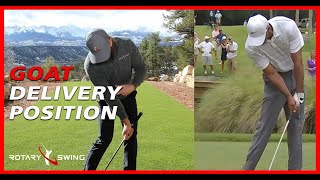
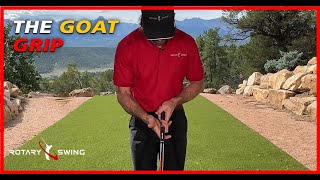
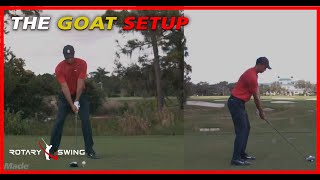
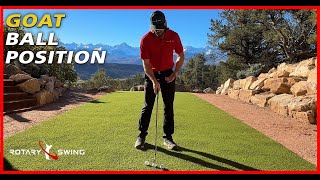
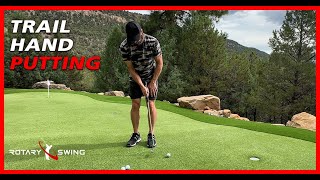

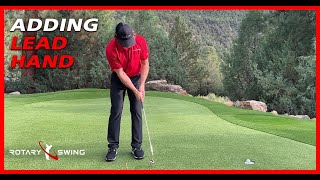
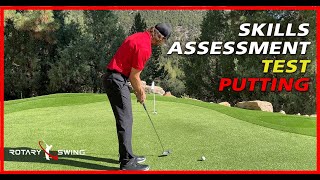
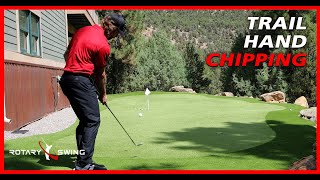
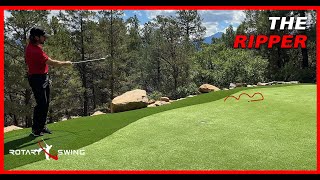
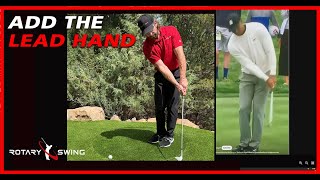
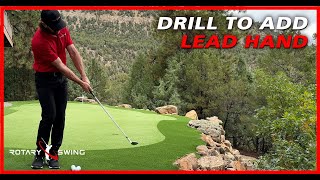
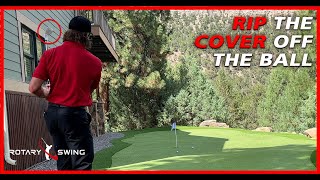
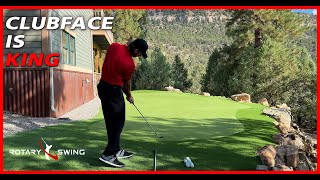

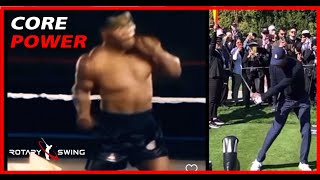
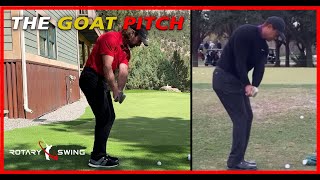
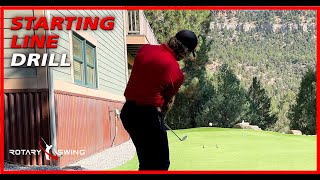
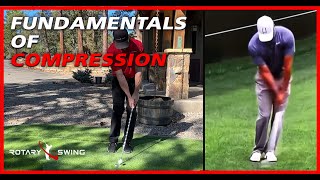
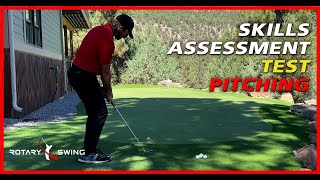
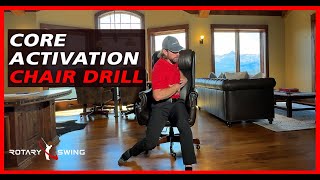
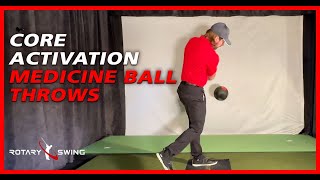
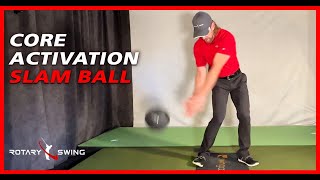
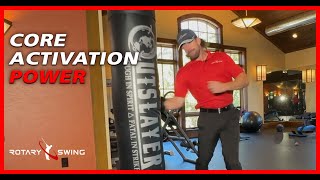
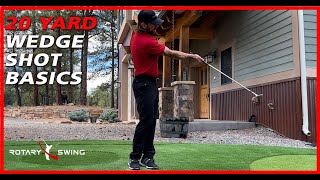
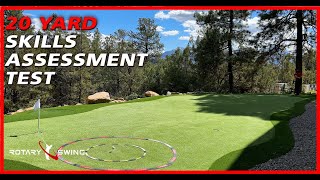
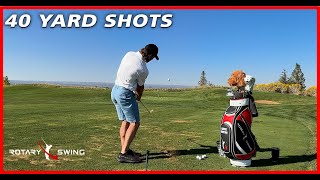
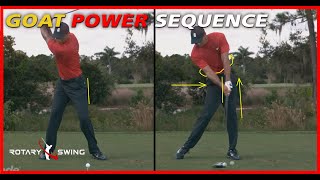
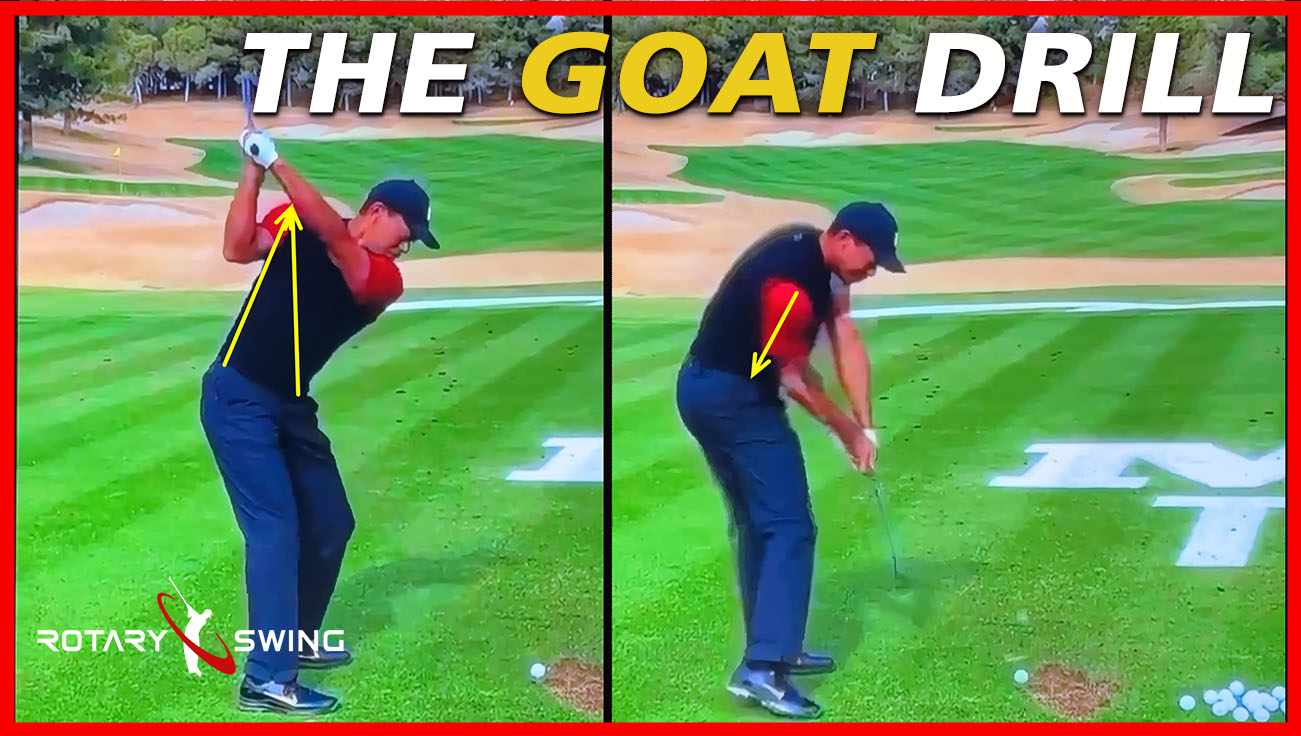
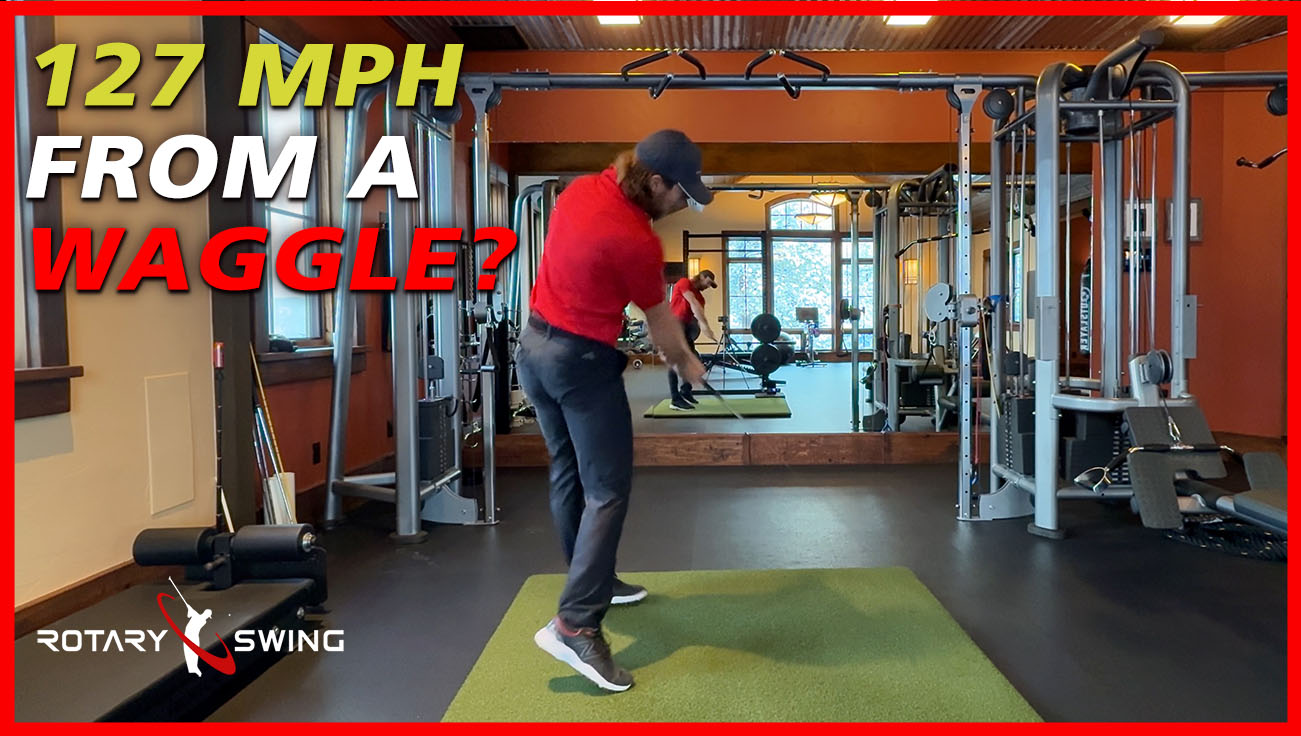
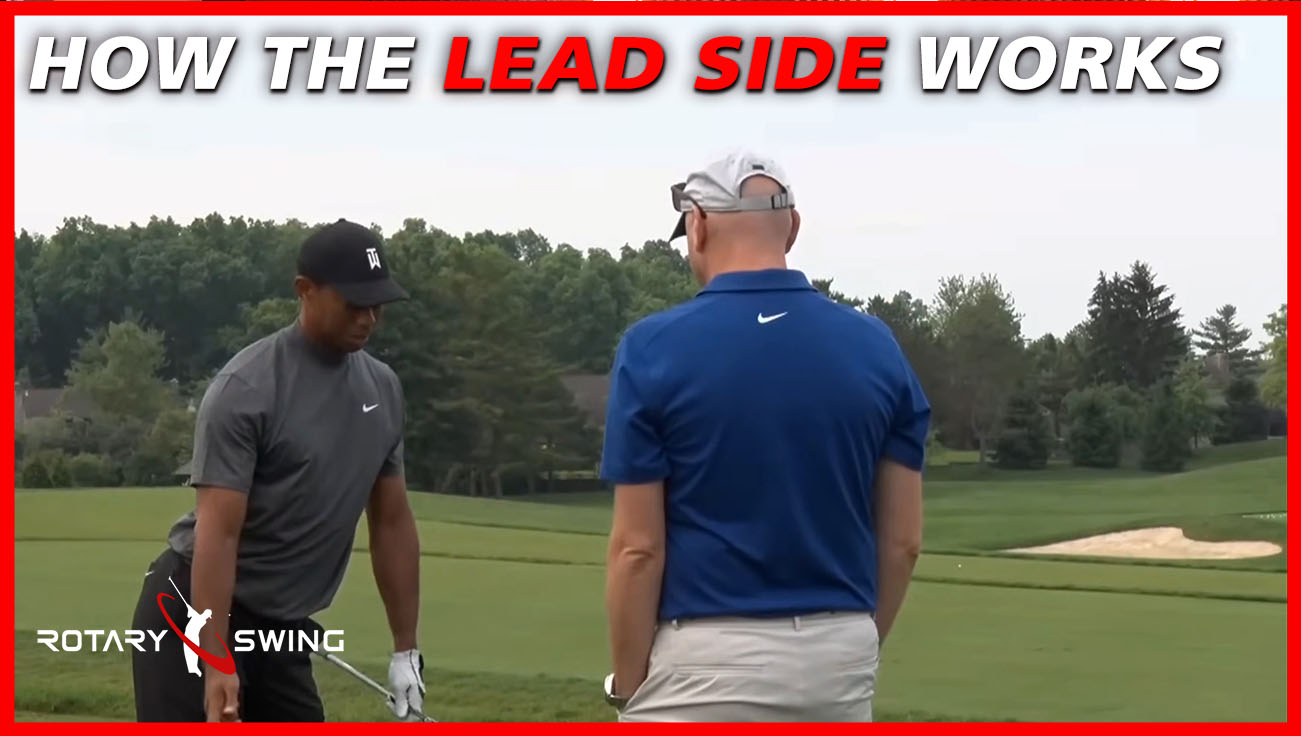
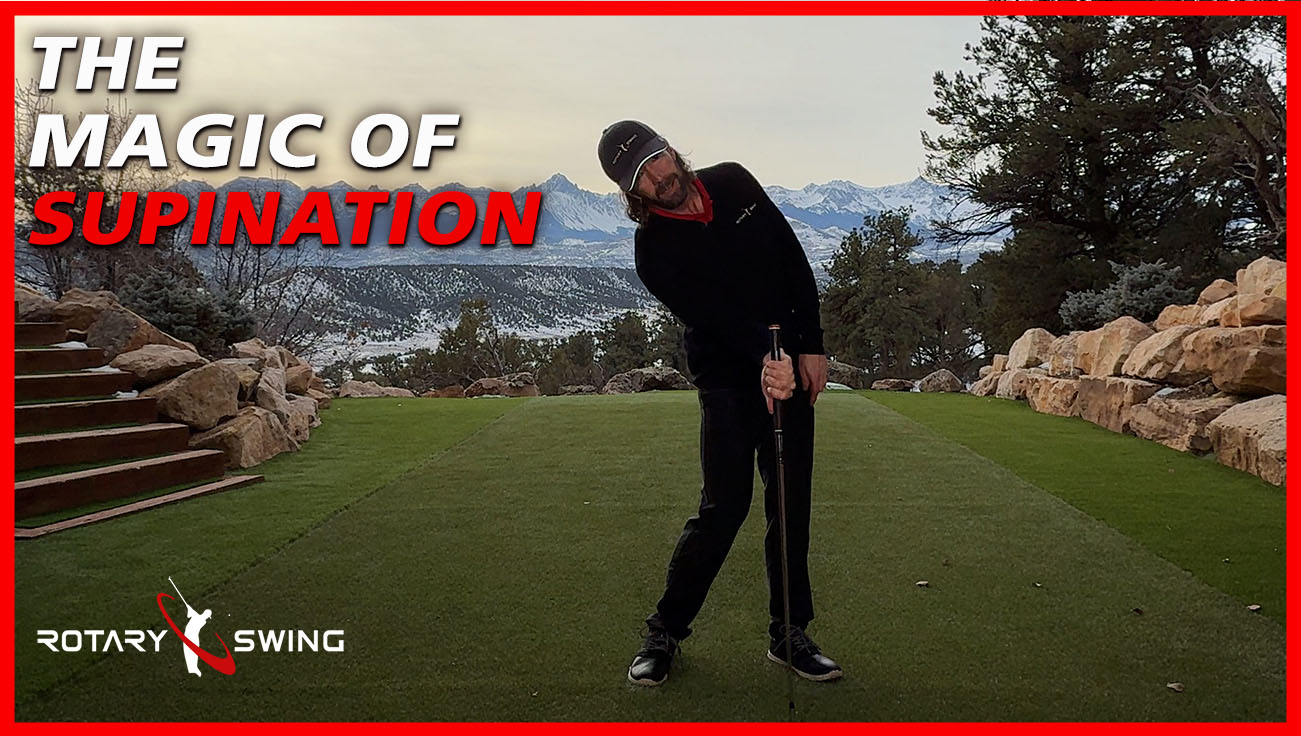
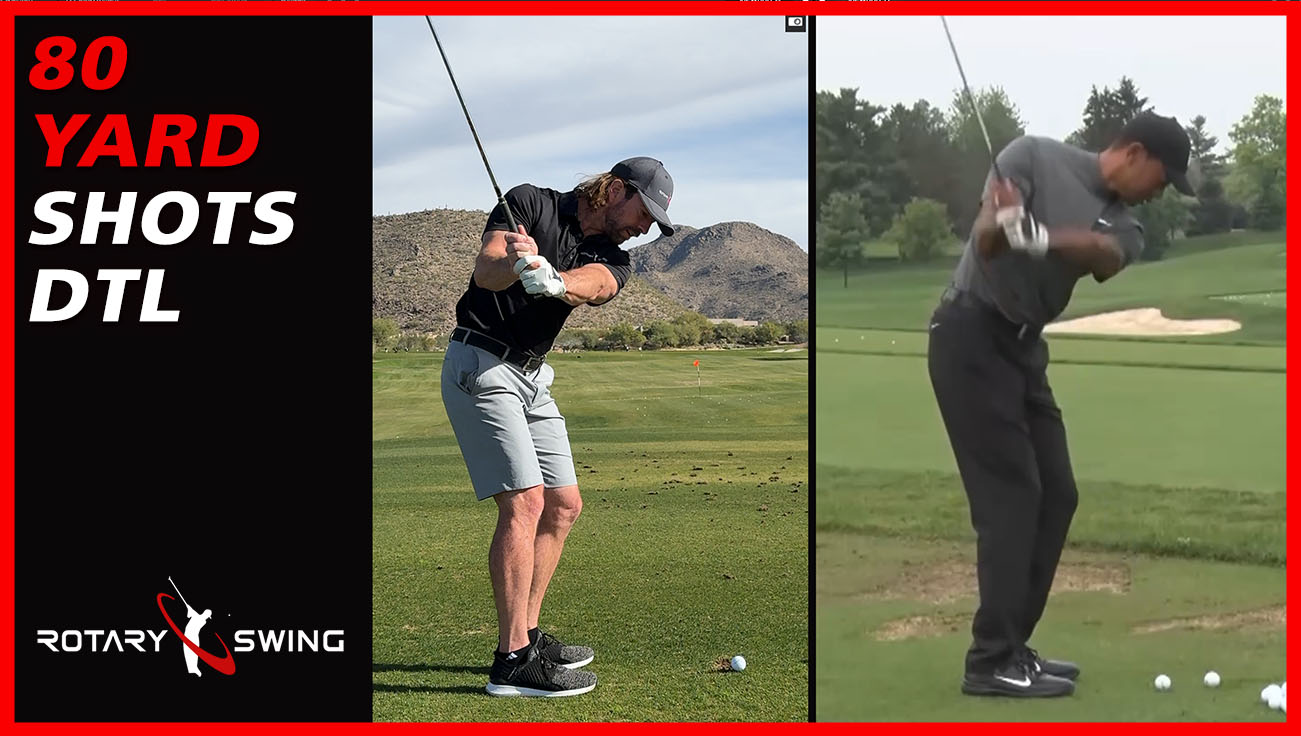
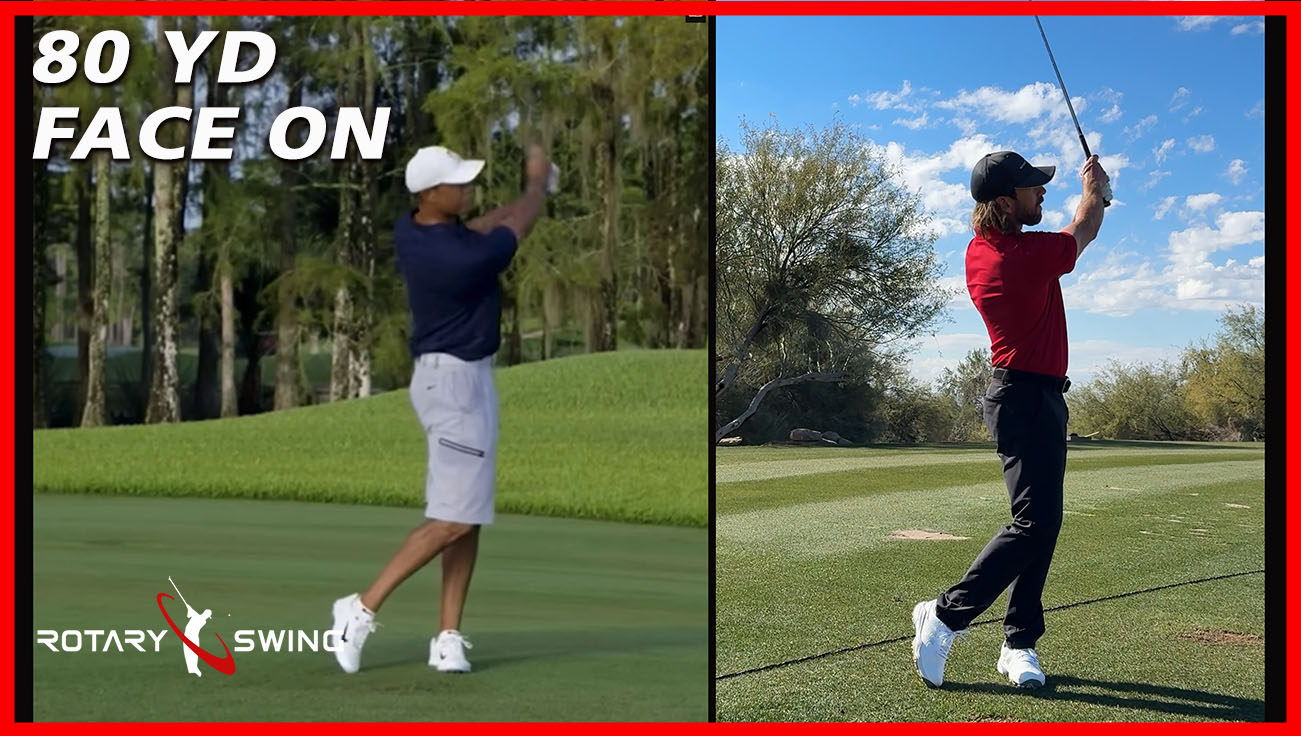
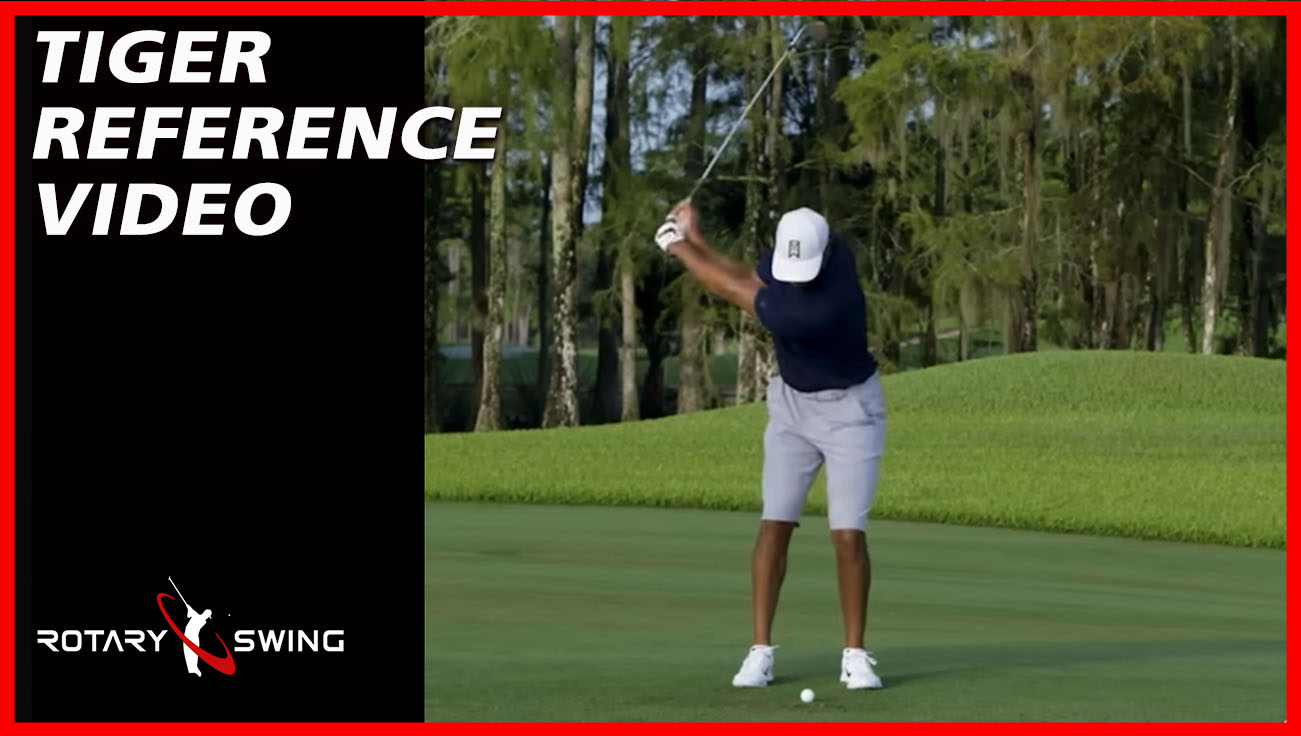

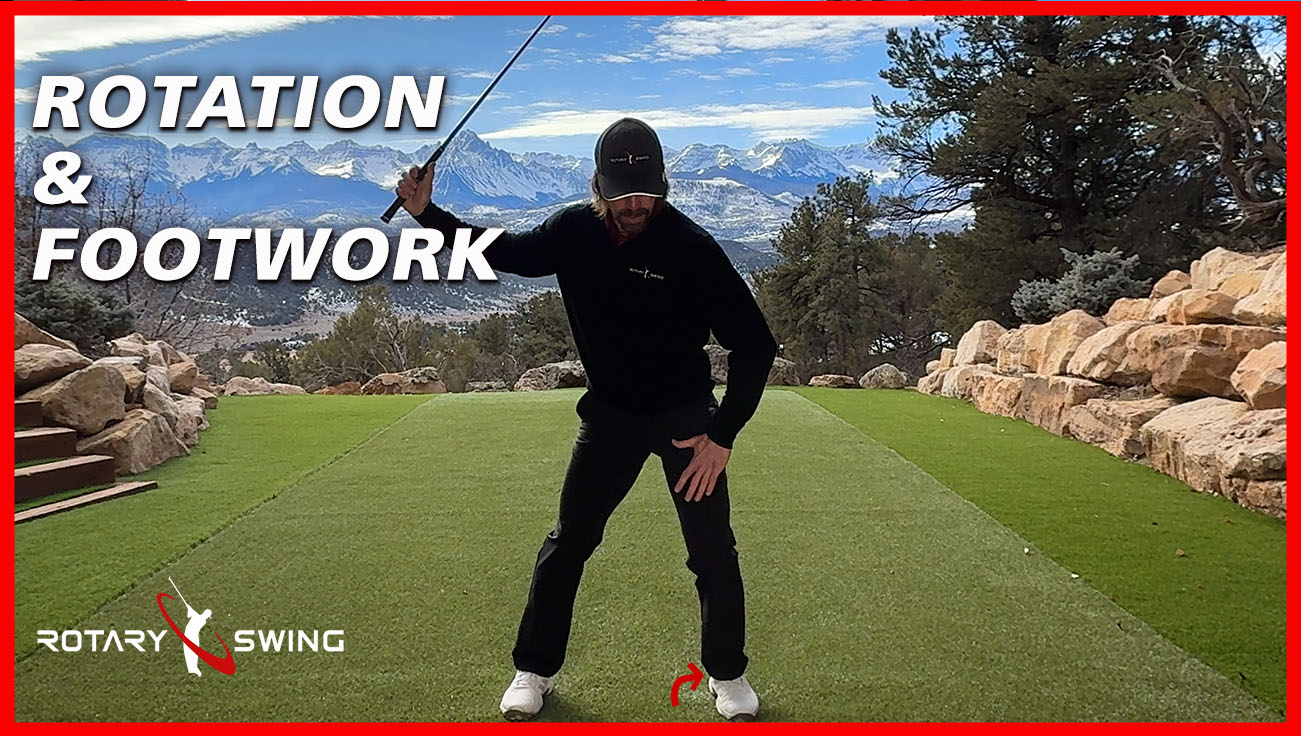
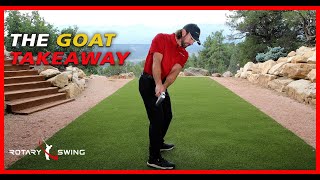

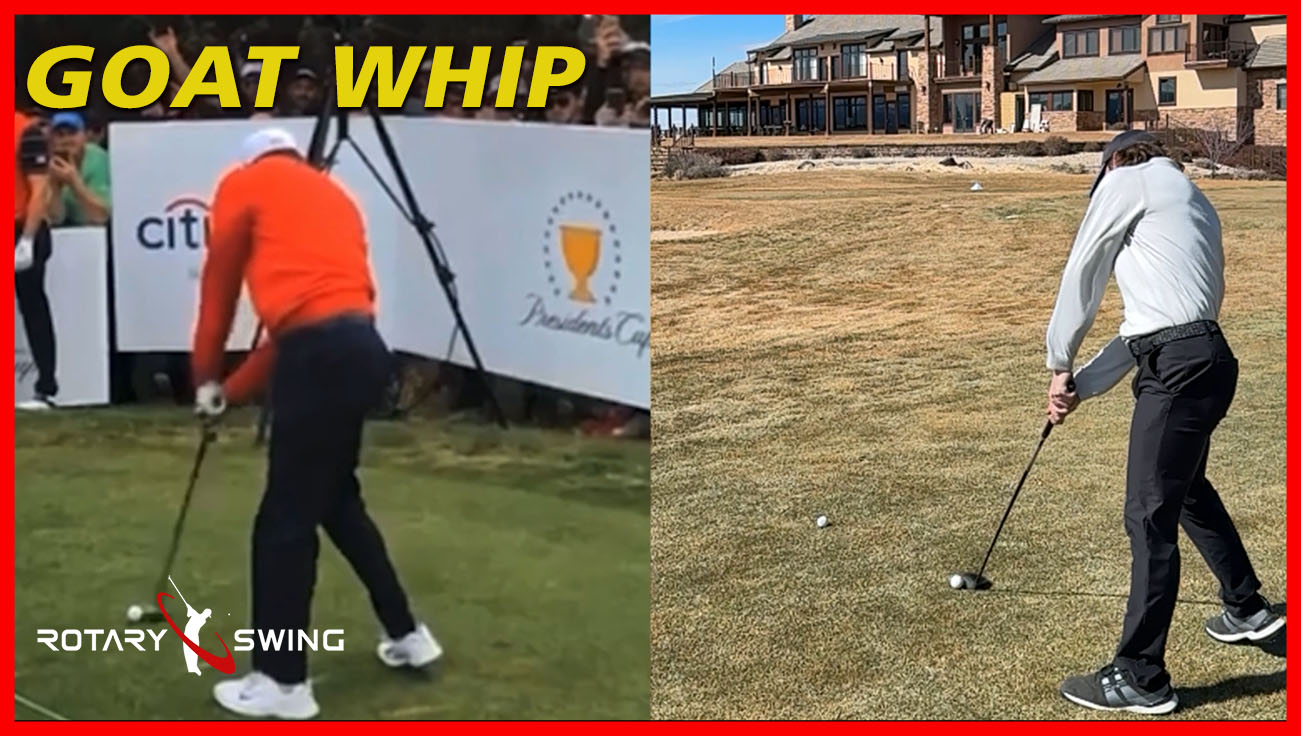
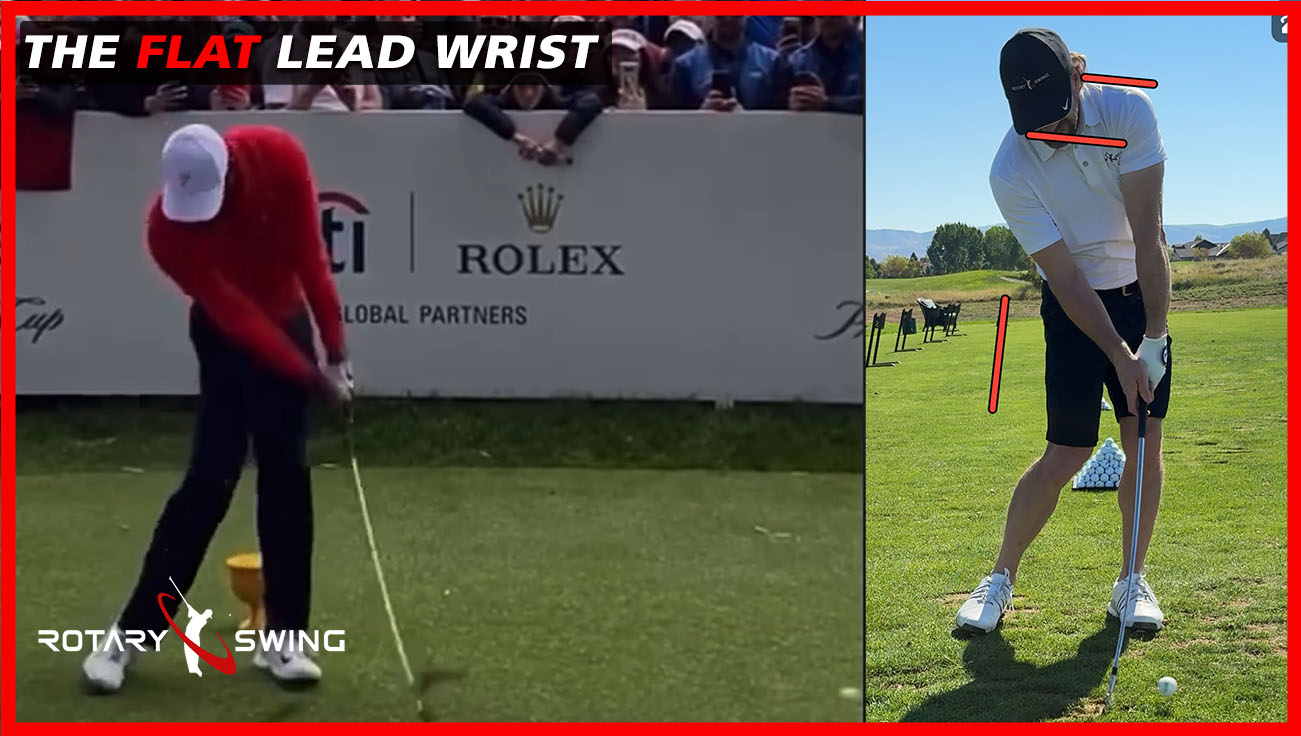
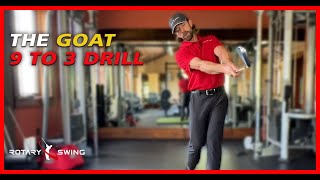
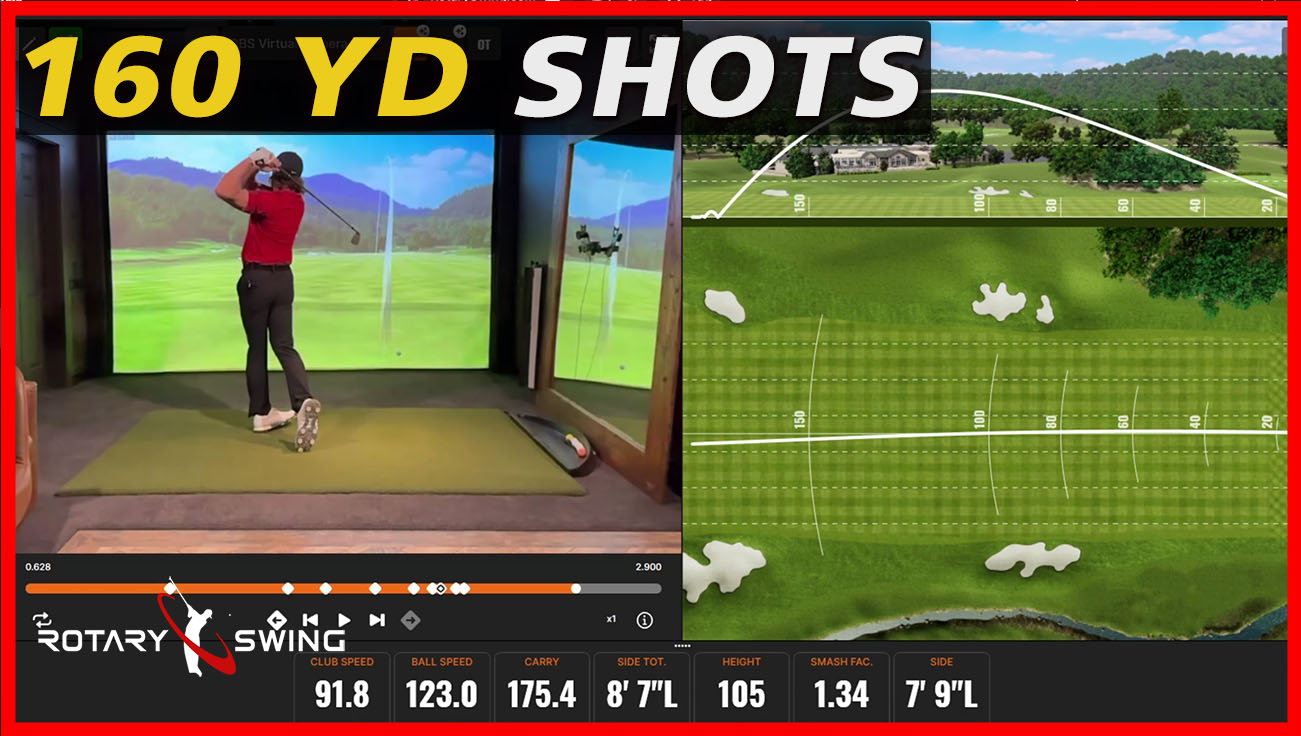

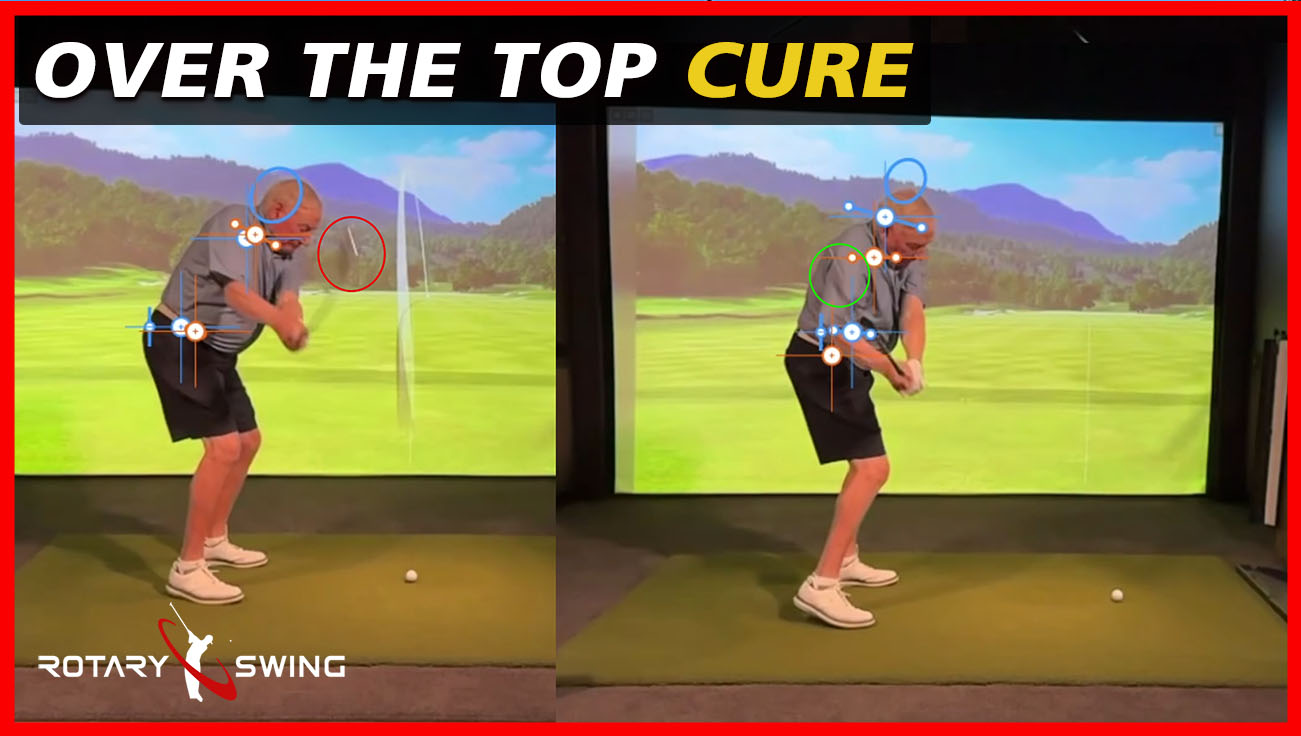
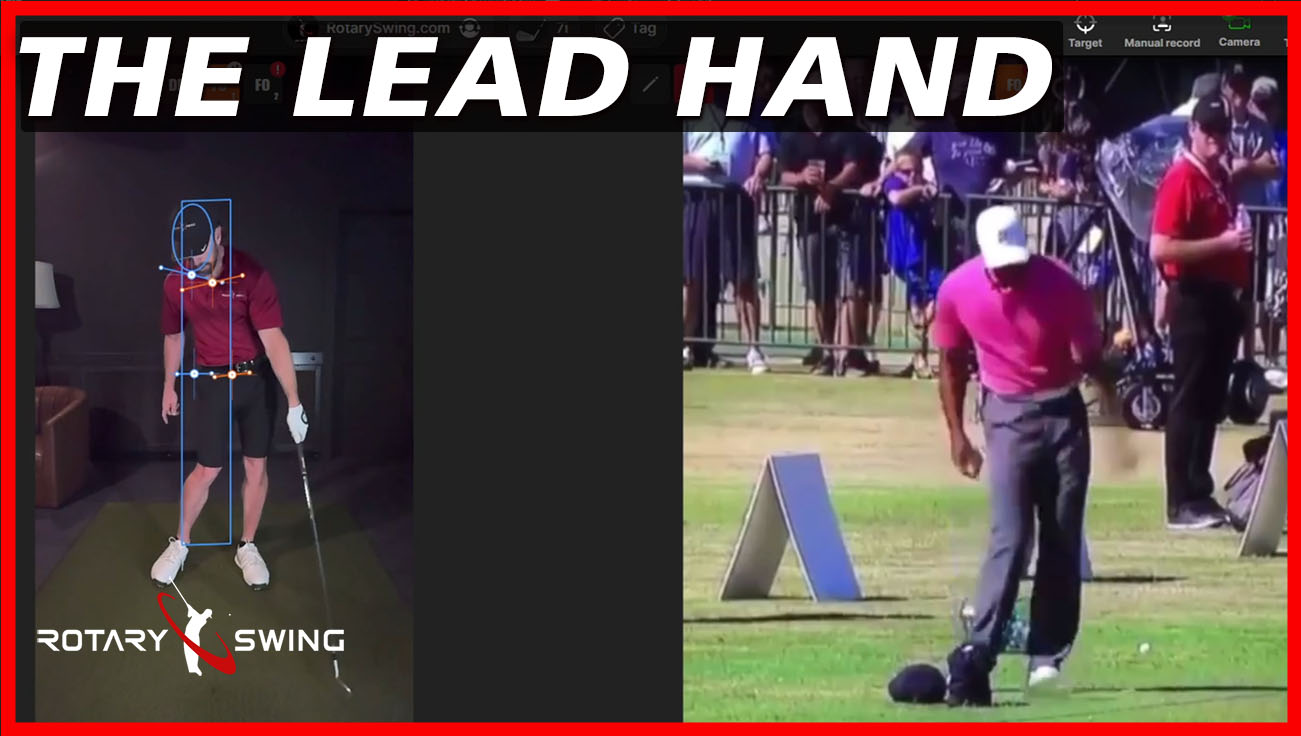
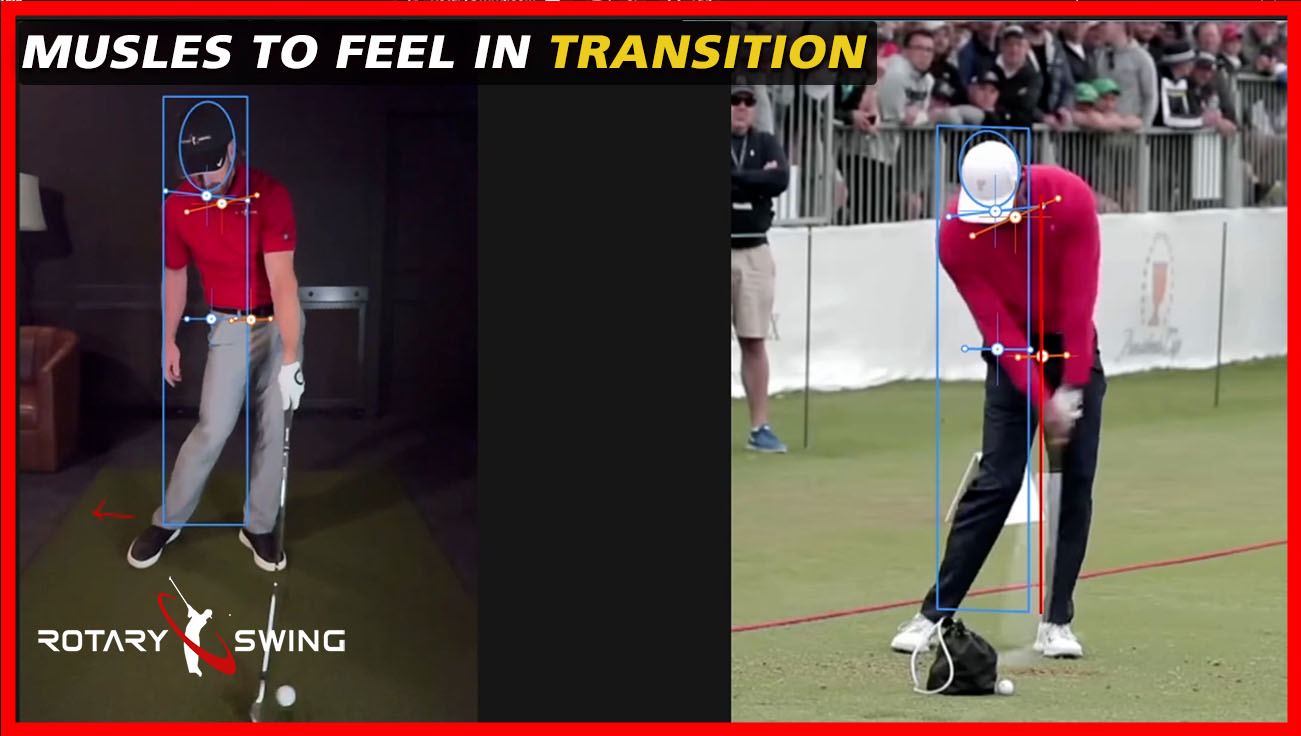
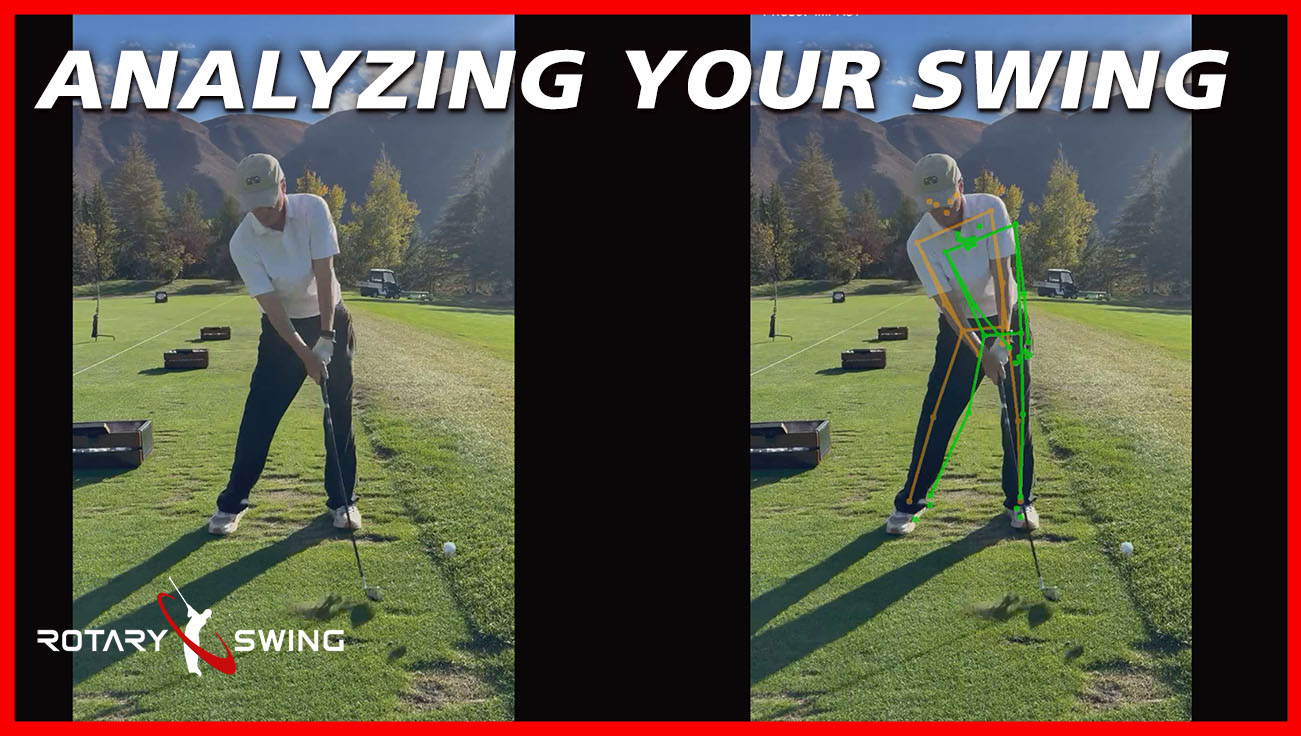

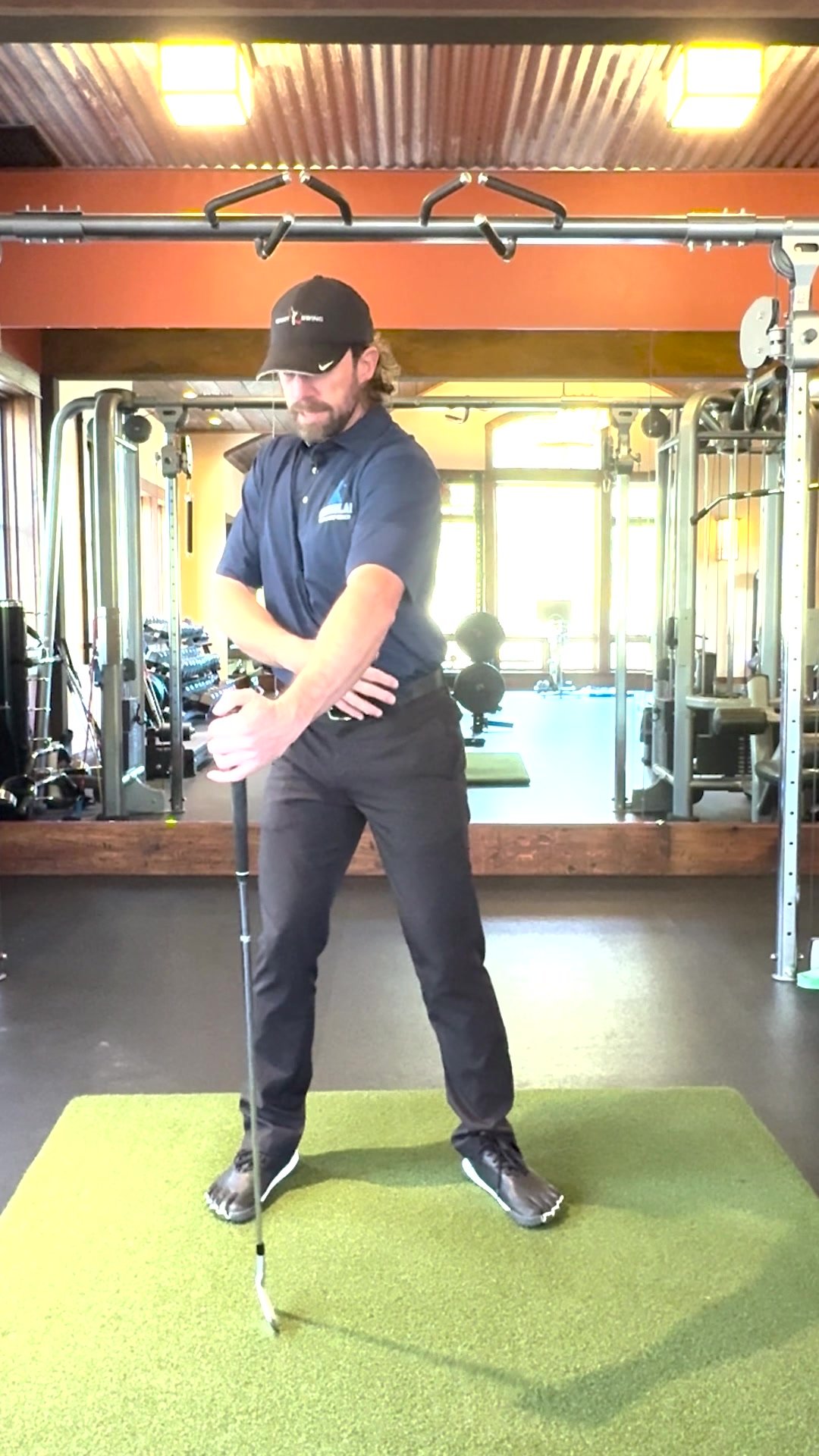

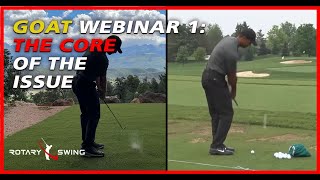
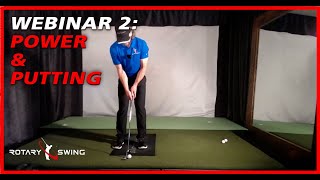
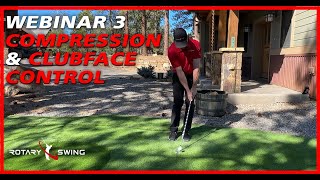
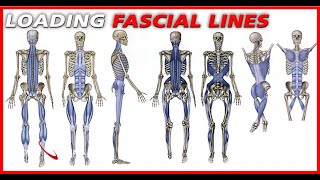
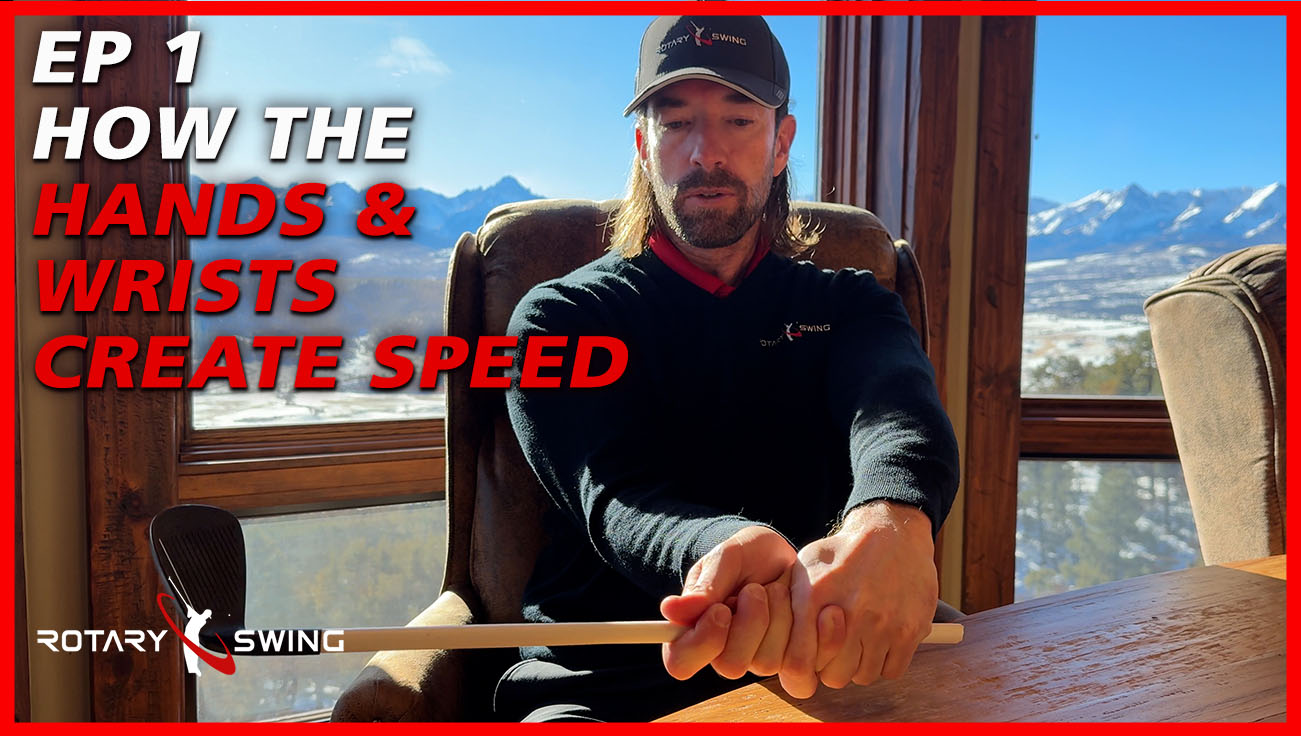

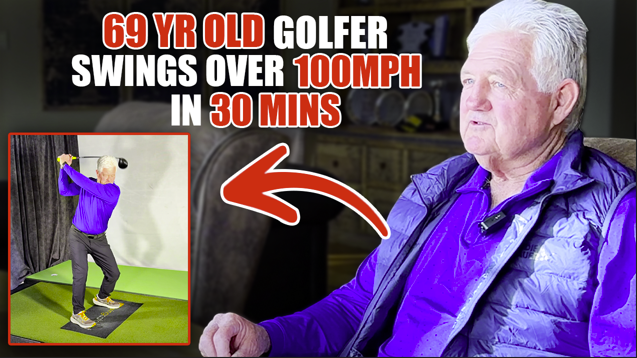
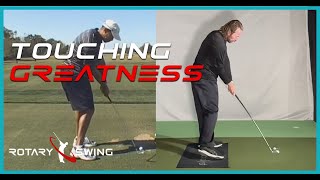
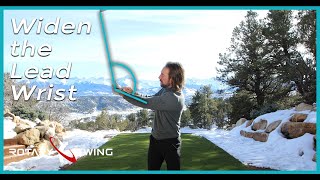
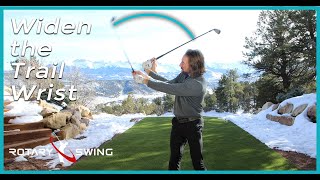

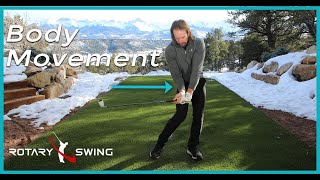

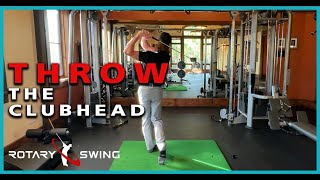
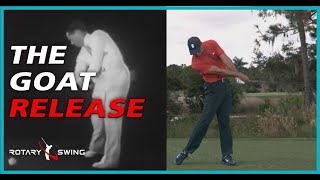
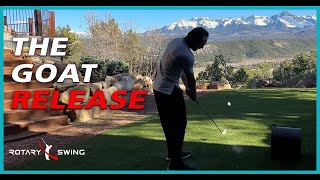
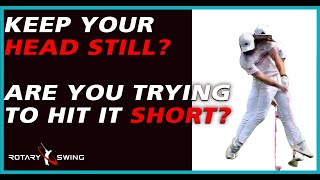
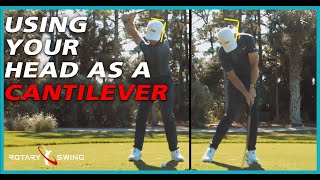
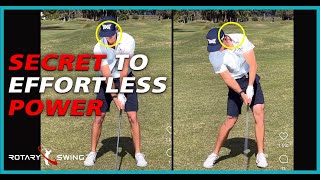
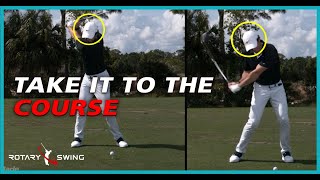

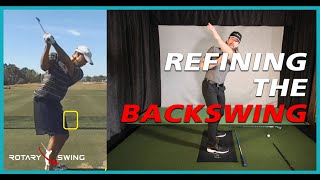

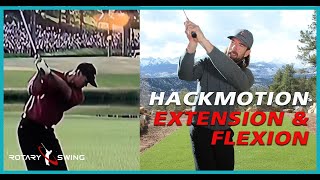
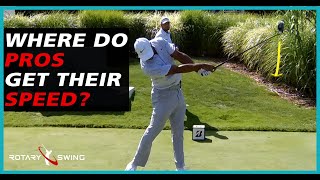
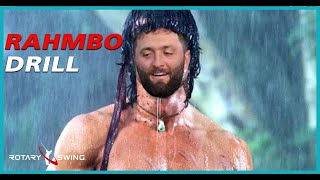

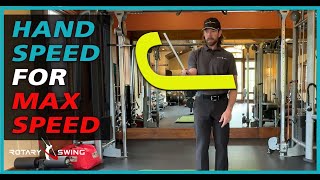
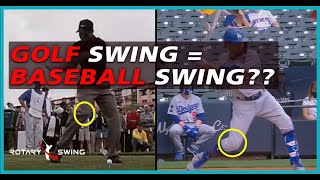
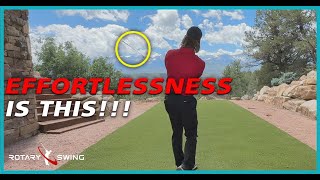

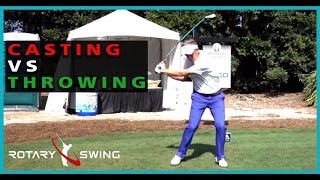
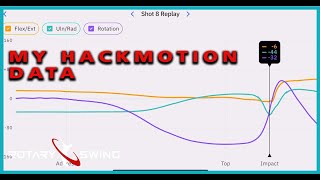
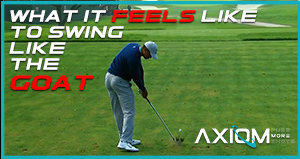
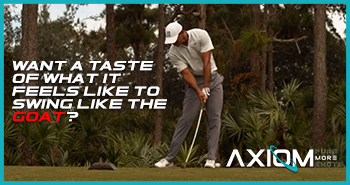

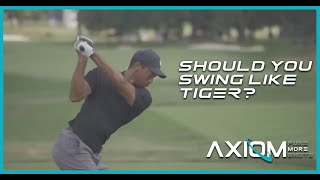
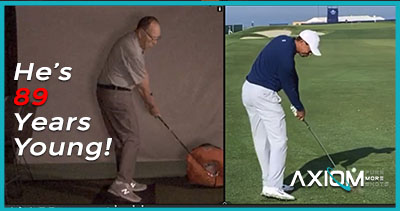
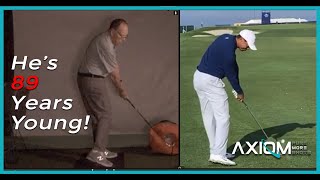
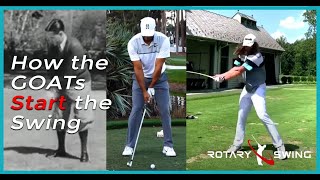
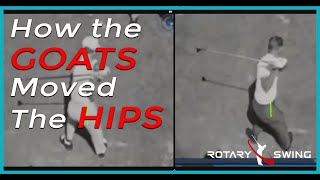
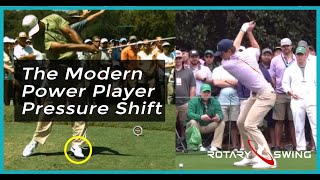
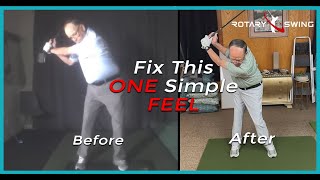
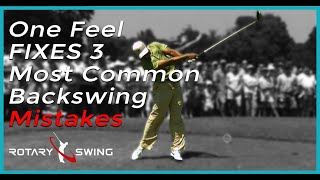
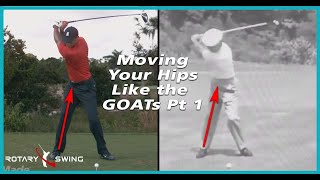
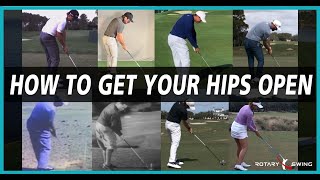

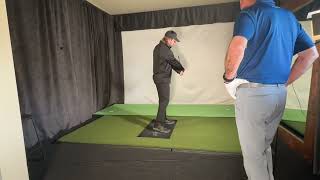
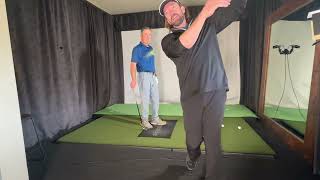
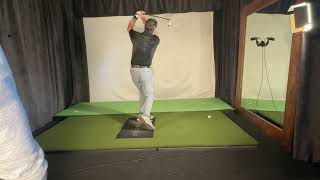
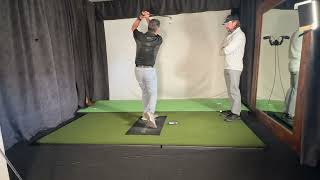
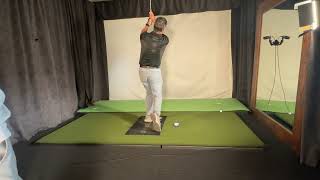
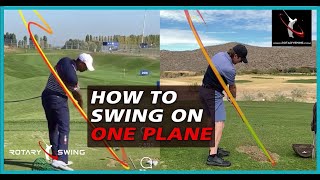
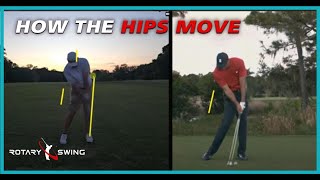
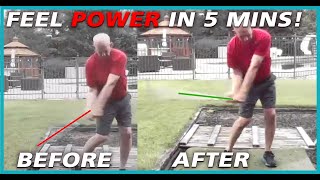
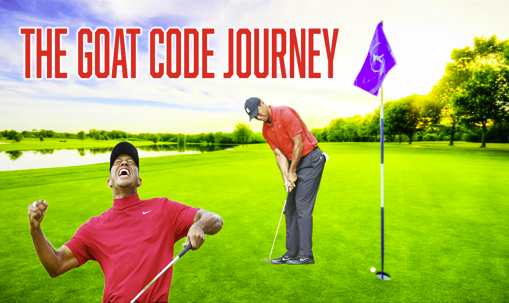
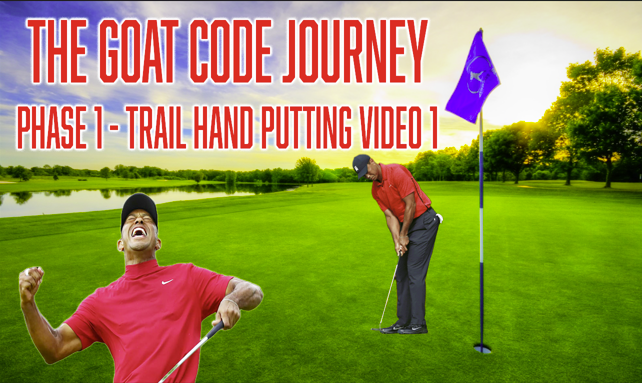
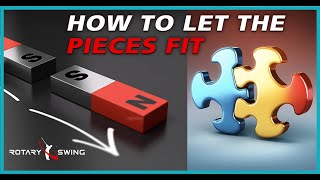

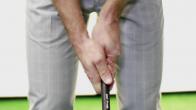
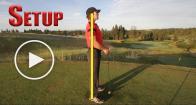
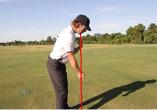
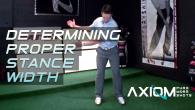
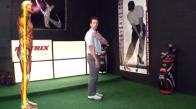
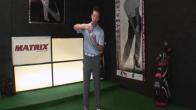
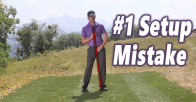

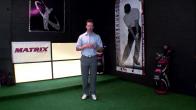
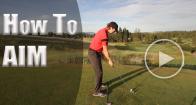
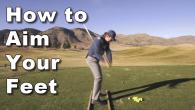
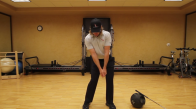
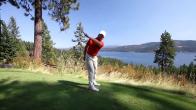
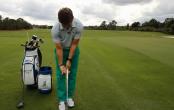

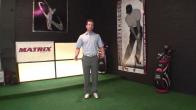
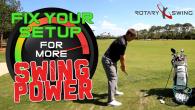

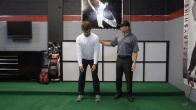

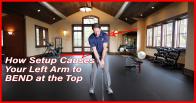
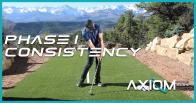

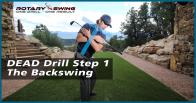
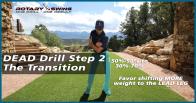
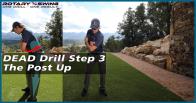
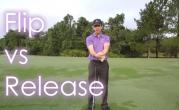
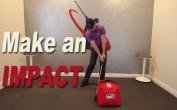
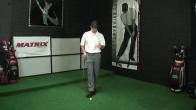
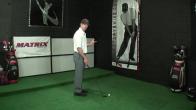
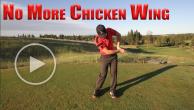
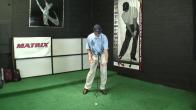


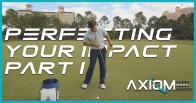
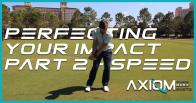
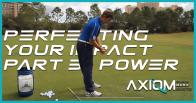
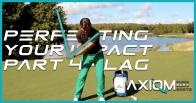
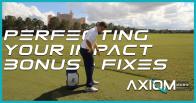
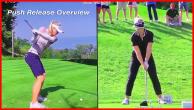

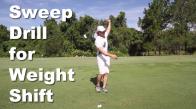


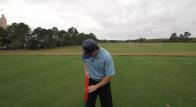
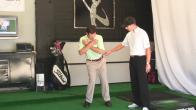
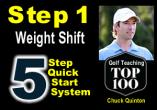
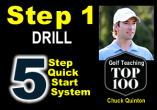
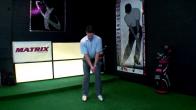
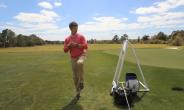

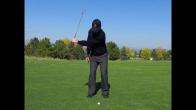
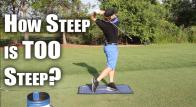
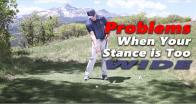
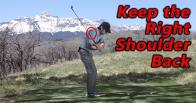
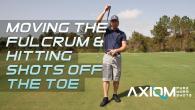
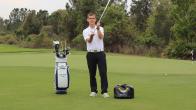
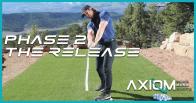
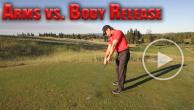
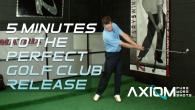
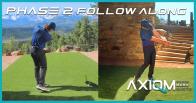
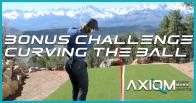
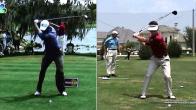
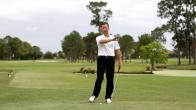
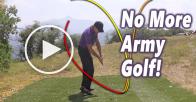
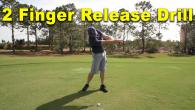
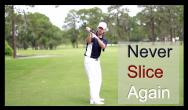
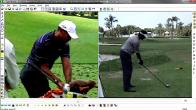
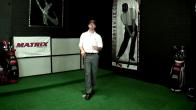
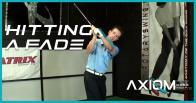
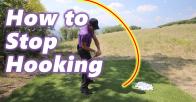
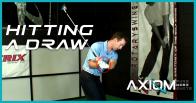
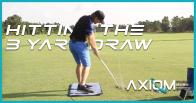
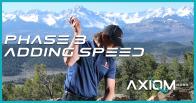
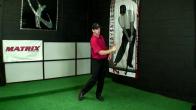
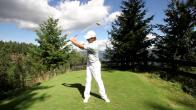

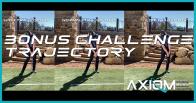
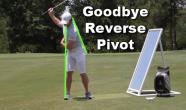
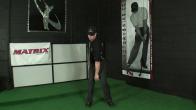
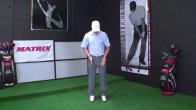
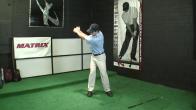
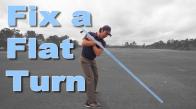
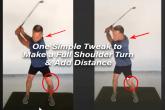
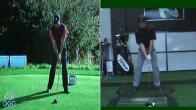
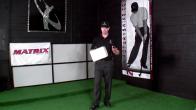

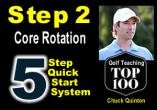
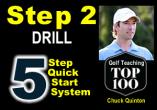
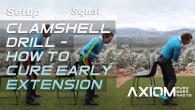
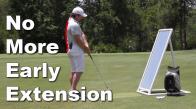
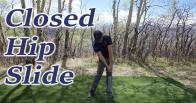

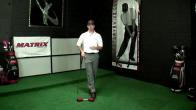
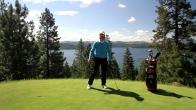
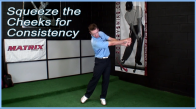
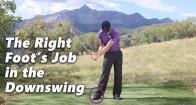
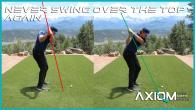
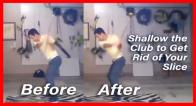

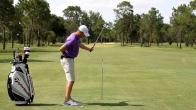
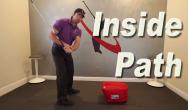

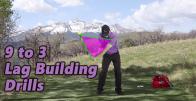
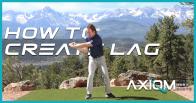
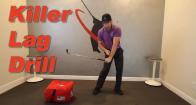
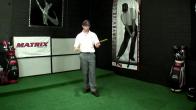
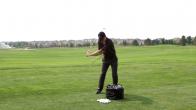
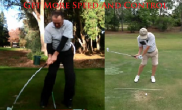
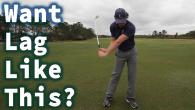
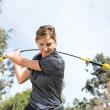
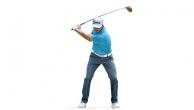
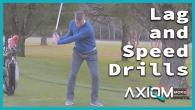
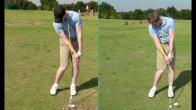
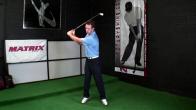
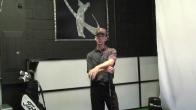
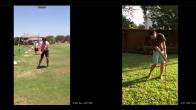


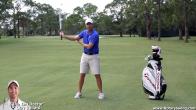
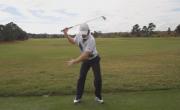
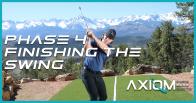
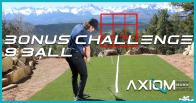

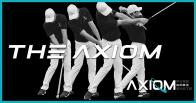
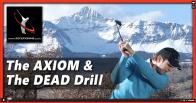
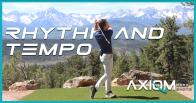
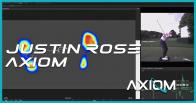


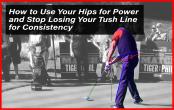
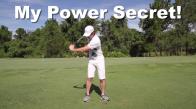
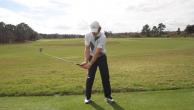
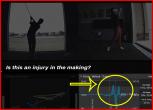
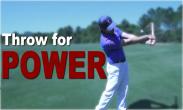
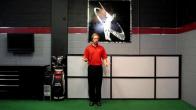
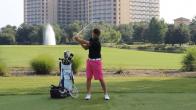
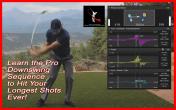
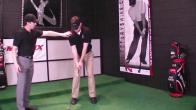
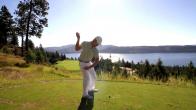

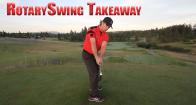


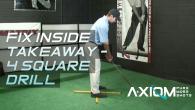
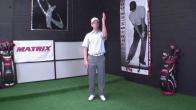
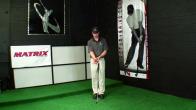


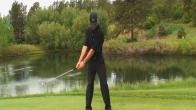
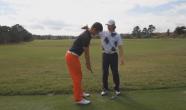
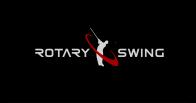
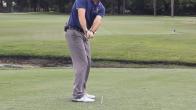

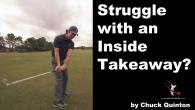
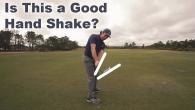
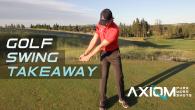
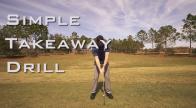
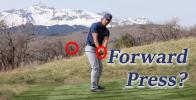
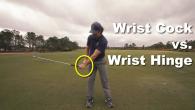
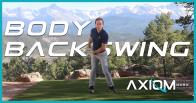
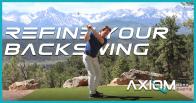
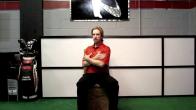
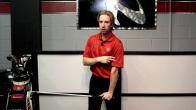


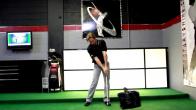
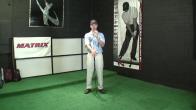
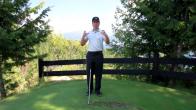
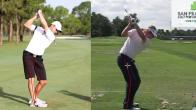
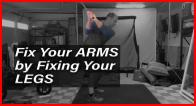
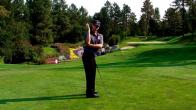
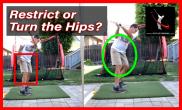
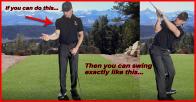

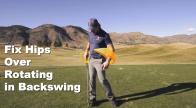
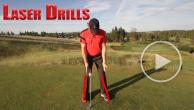
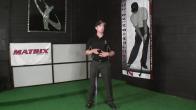

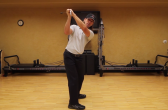
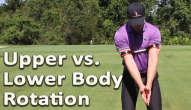
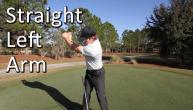


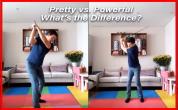
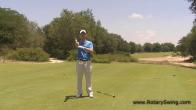
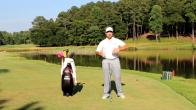


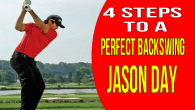

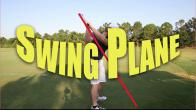
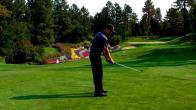
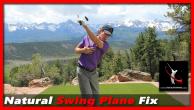
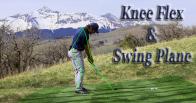
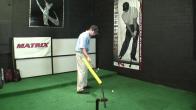

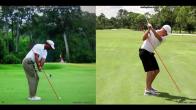

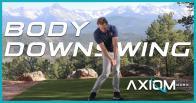

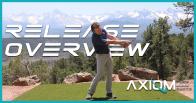

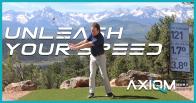
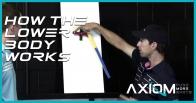
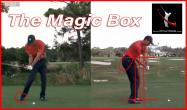
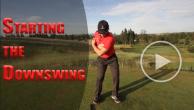

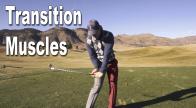
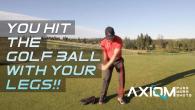

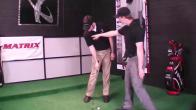
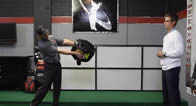
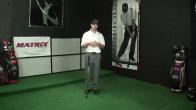
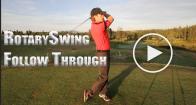
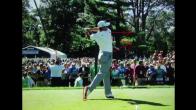
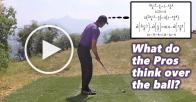
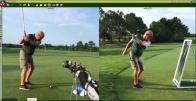

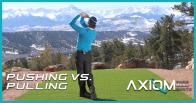
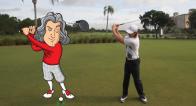
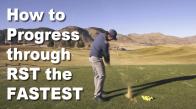
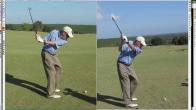


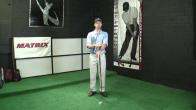
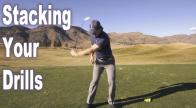
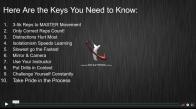
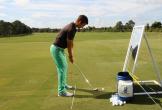

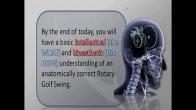
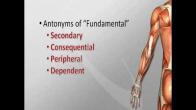
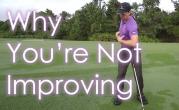
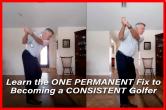
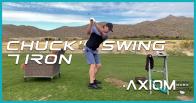
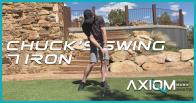

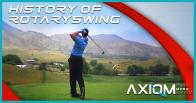
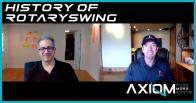
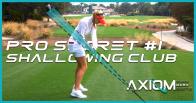
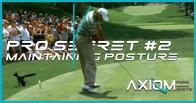
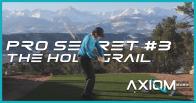
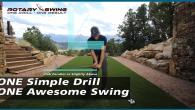

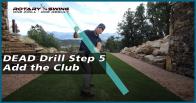

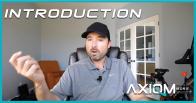
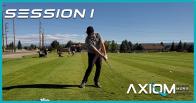
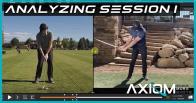
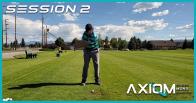
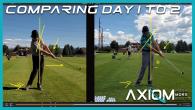
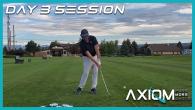

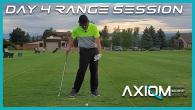
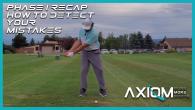
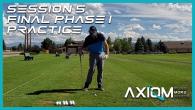

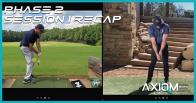
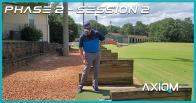
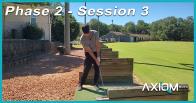
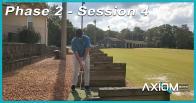
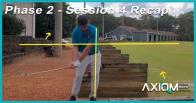
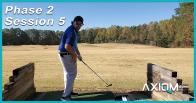

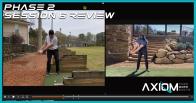
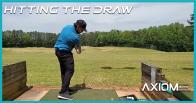


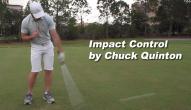
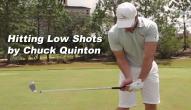
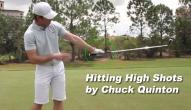

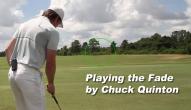
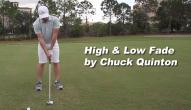

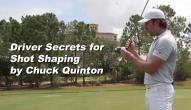
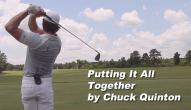
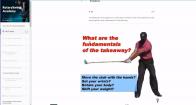
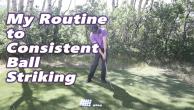

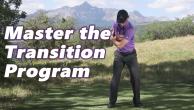
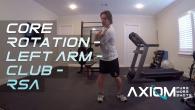
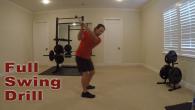
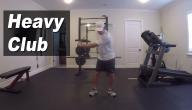
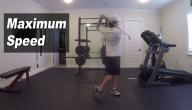
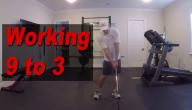
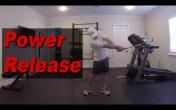
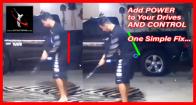
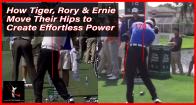
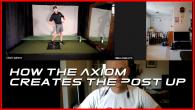
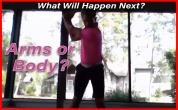
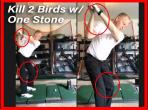
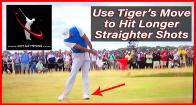

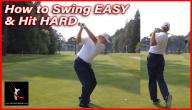
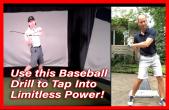
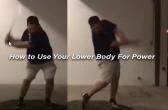
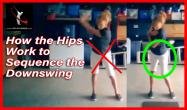
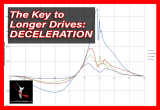
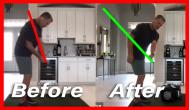
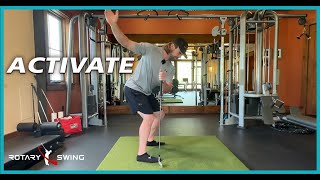
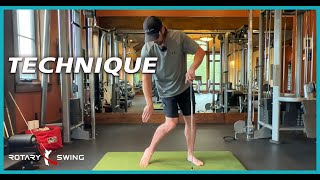
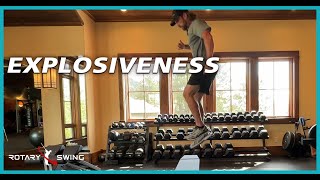
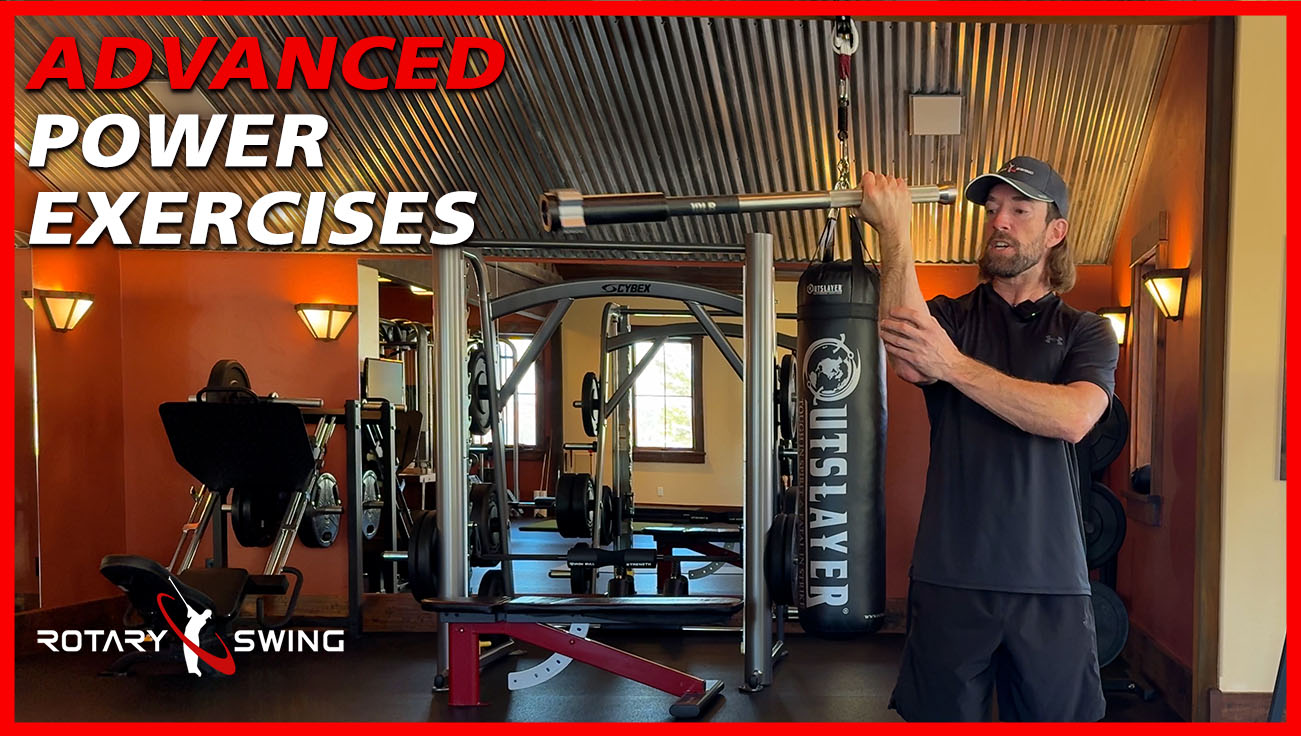
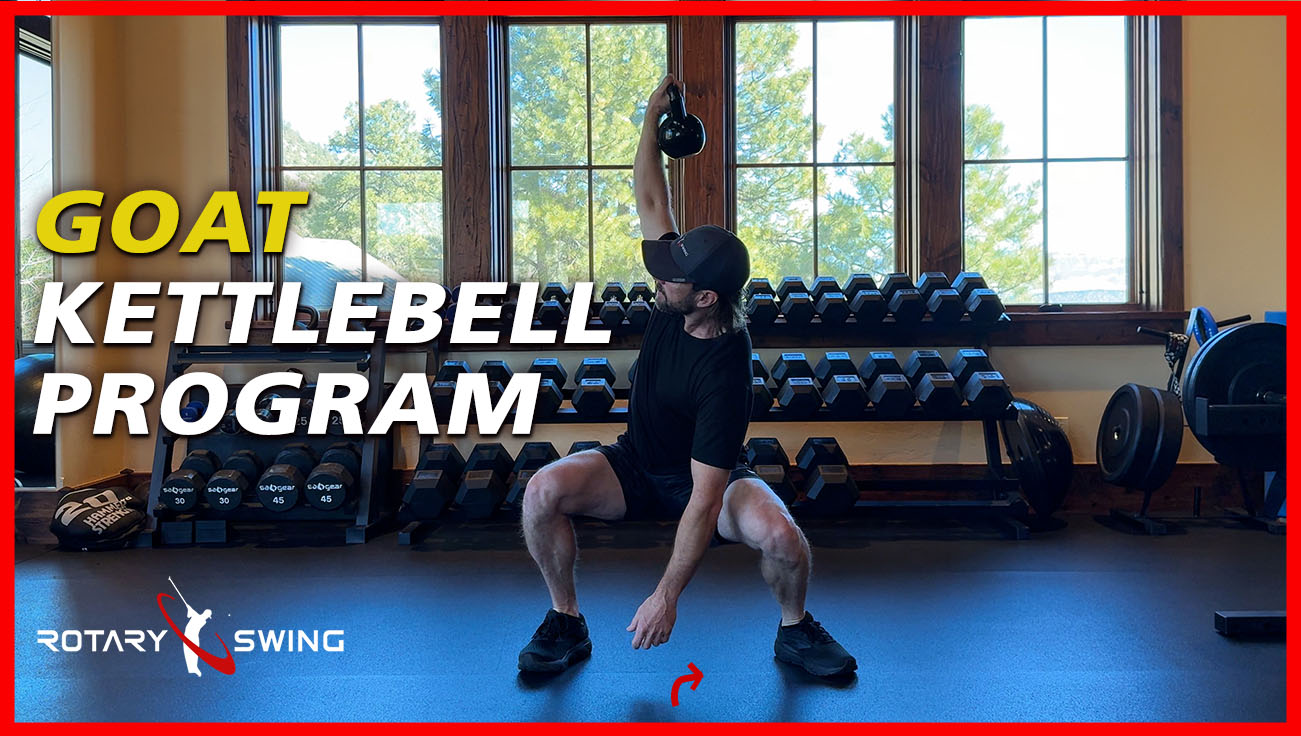
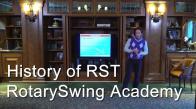
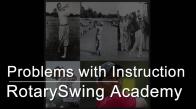
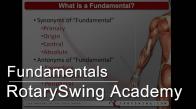
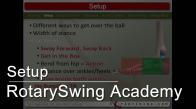
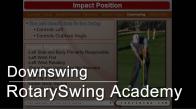

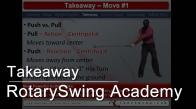
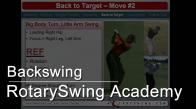
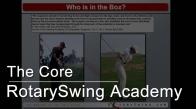
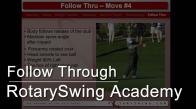


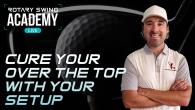
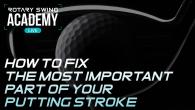
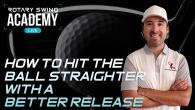
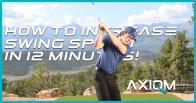
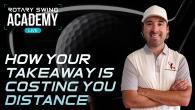
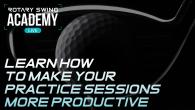
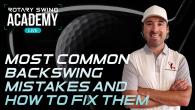
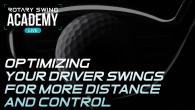
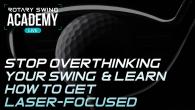
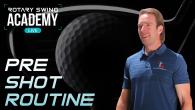


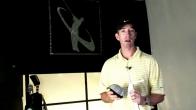
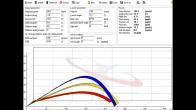

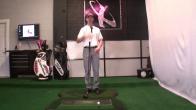
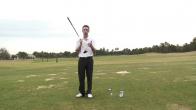
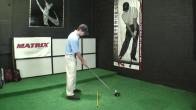
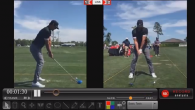

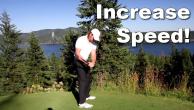
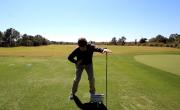
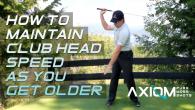
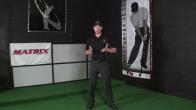
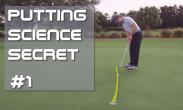
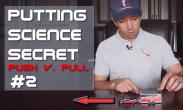

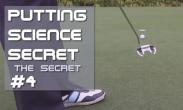
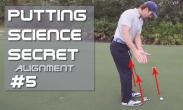
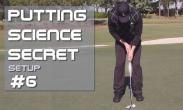
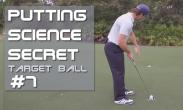
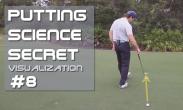
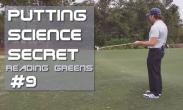





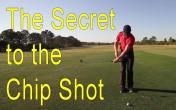
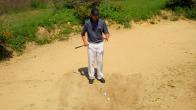
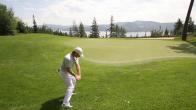
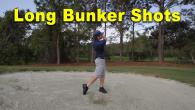
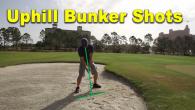
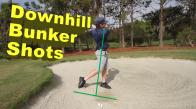
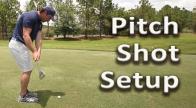
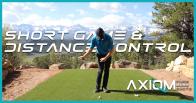
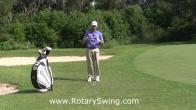
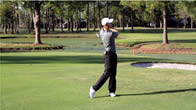
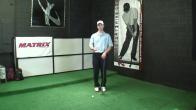
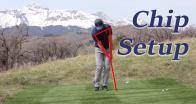
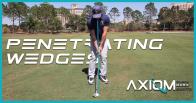

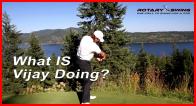
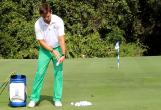



Ernie
Ernie
Craig (Certified RST Instructor)
George
Craig (Certified RST Instructor)
Ronald
Craig (Certified RST Instructor)
Nikolai
Craig (Certified RST Instructor)
Mark
Craig (Certified RST Instructor)
Ghaz
Craig (Certified RST Instructor)
Ghaz
Craig (Certified RST Instructor)
Michael
Craig (Certified RST Instructor)
Michael
Craig (Certified RST Instructor)
Michael
Craig (Certified RST Instructor)
Donald
Craig (Certified RST Instructor)
Darren
Craig (Certified RST Instructor)
Darren
Kevin
Craig (Certified RST Instructor)
Richard
Craig (Certified RST Instructor)
Richard
Craig (Certified RST Instructor)
Richard
Richard
Craig (Certified RST Instructor)
Richard
Gabriela
Craig (Certified RST Instructor)
miklos
Craig (Certified RST Instructor)
miklos
Craig (Certified RST Instructor)
Steve
Steve
Craig (Certified RST Instructor)
jerry
Craig (Certified RST Instructor)
Robert
Craig (Certified RST Instructor)
Robert
Craig (Certified RST Instructor)
Robert
Craig (Certified RST Instructor)
Donald
Craig (Certified RST Instructor)
Tony
Steve
Craig (Certified RST Instructor)
Dennis
Craig (Certified RST Instructor)
Kendall
Craig (Certified RST Instructor)
Kendall
Craig (Certified RST Instructor)
Paul
Craig (Certified RST Instructor)
Dany
Craig (Certified RST Instructor)
Dany
Craig (Certified RST Instructor)
rex
Craig (Certified RST Instructor)
Alex Francis Ver
Craig (Certified RST Instructor)
Michael
Craig (Certified RST Instructor)
Chris
Chuck
Dan
Chuck
Gordon
Chuck
Donald
Chuck
Griffen
Chuck
Griffen
Chuck
Doug
Chuck
Ryo
Chuck
michael
Chuck
michael
Chuck
Reed
Chuck
David
Chuck
Juan Jose
Chuck
John
Chuck
Mehul
Chuck
John
Chuck
charles
Craig (Certified RST Instructor)
charles
Craig (Certified RST Instructor)
charles
Craig (Certified RST Instructor)
Kevin
Craig (Certified RST Instructor)
charles
Craig (Certified RST Instructor)
Marianne
Chuck
Steven
Chuck
Ronald
Chuck
Joost
Chuck
Nelson
Chuck
charles
Chuck
Venkatesh
Chuck
Venkatesh
Venkatesh
Chuck
charles
Chuck
Jack
Chuck
Bernie
Chuck
RJ
Chuck
Mark
Chuck
Cale
Chuck
Cale
Chuck
Bryan
Roy
Chuck
Robert
Chuck
William
Chuck
Chuck
Olivia
Chuck
Marcel (Certified RST Instructor)
Chuck
Ryan
Chuck
Paul
Chuck
Paul
David
Chuck
Ronald
Chuck
Ken
Chuck
Richard
Chuck
Richard
Chuck
Ben
Chuck
David
Chuck
Brady
Chuck
John
Chuck
Campbell
Chuck
Paul
Chuck
David
Chuck
David
Chuck
Steve
Bob
Chuck
David
Chuck
David
Chuck
Will
Richard Donald